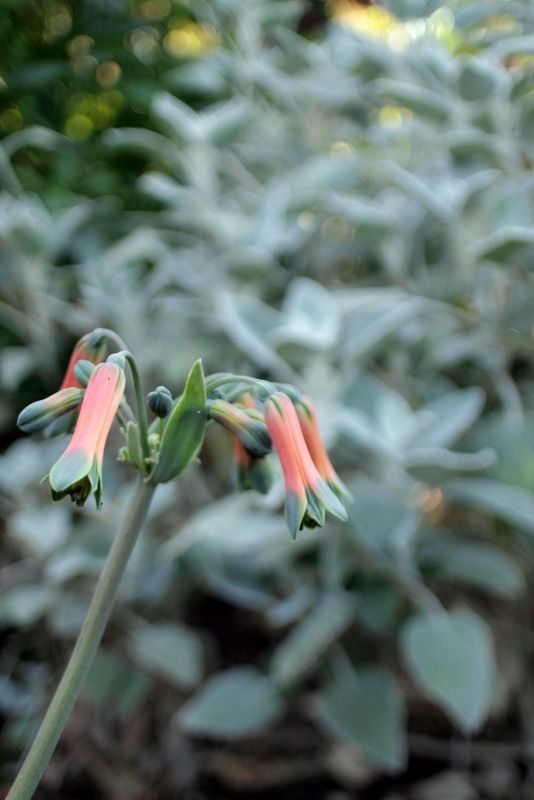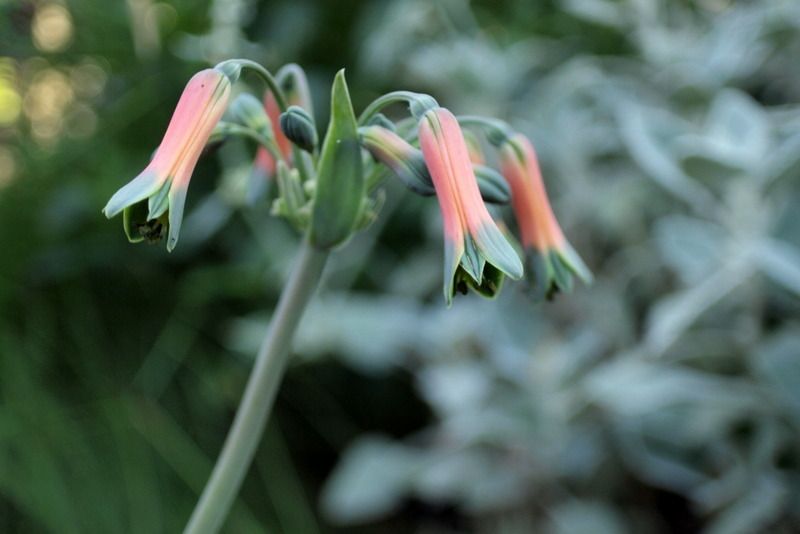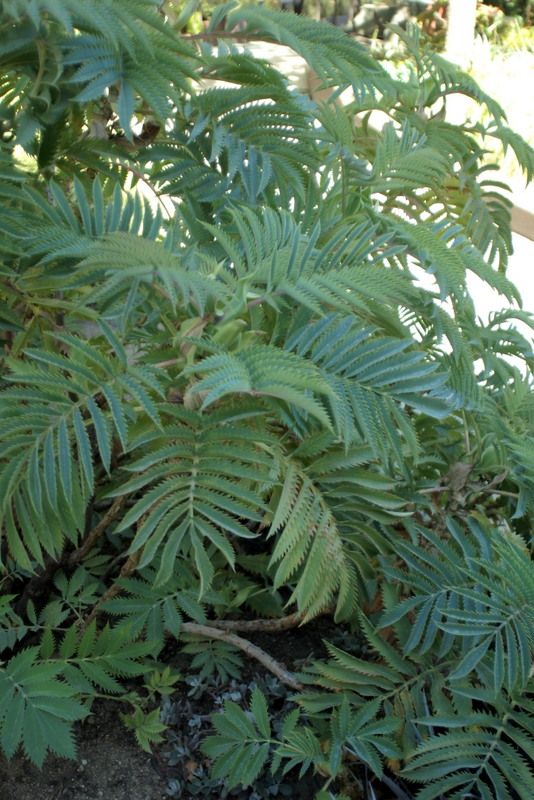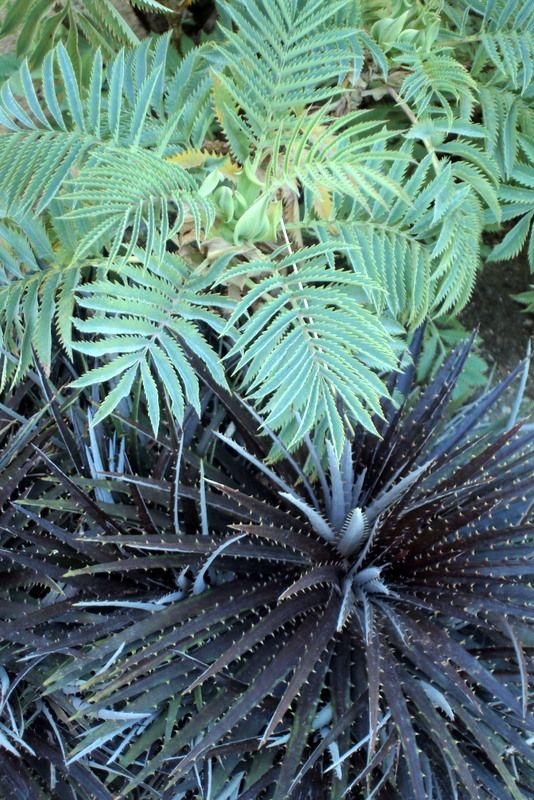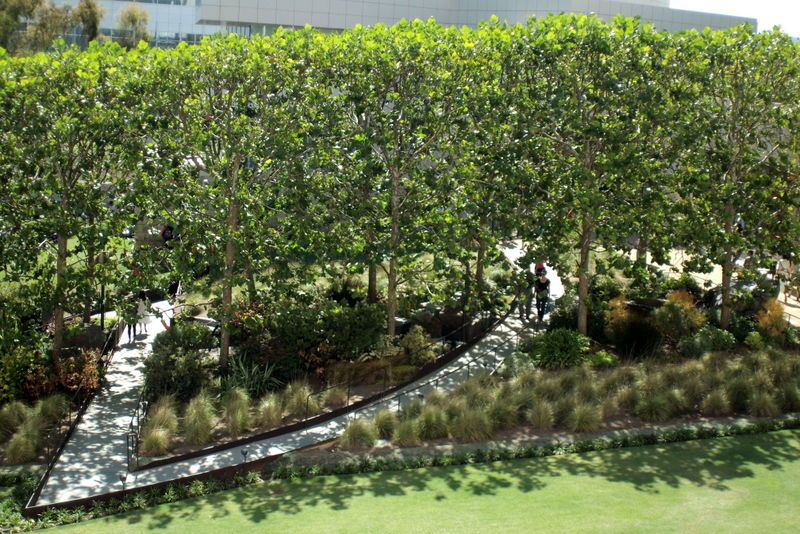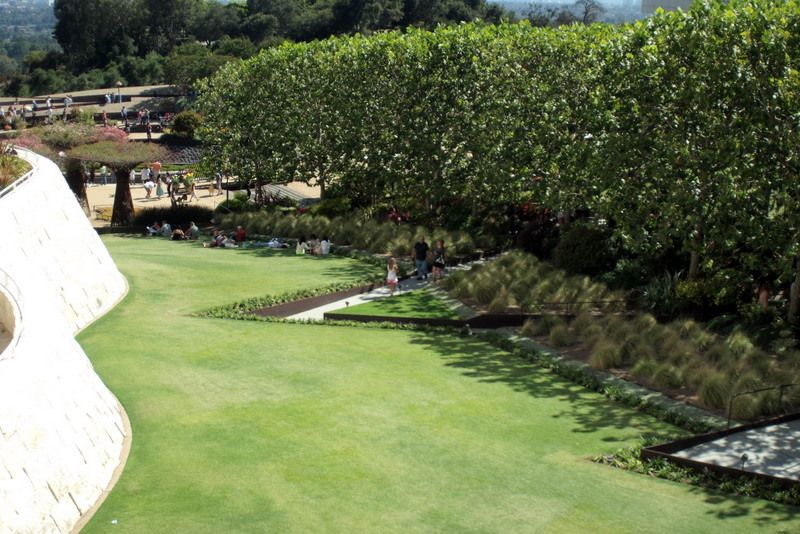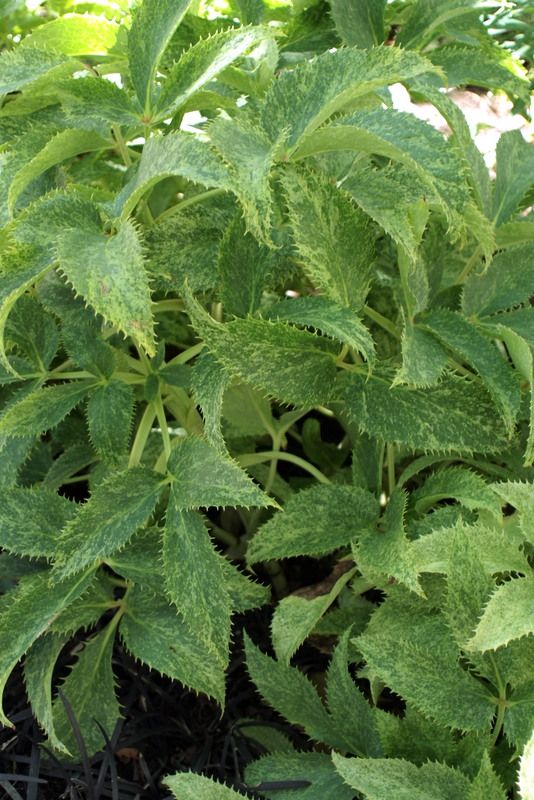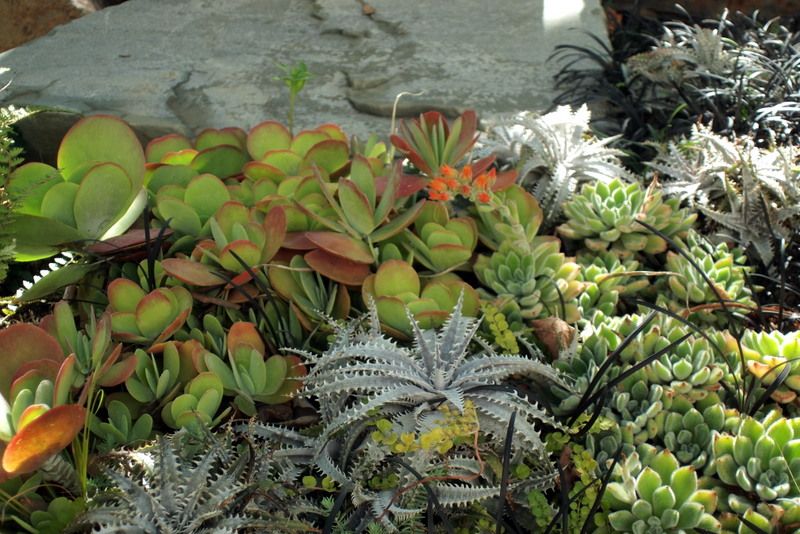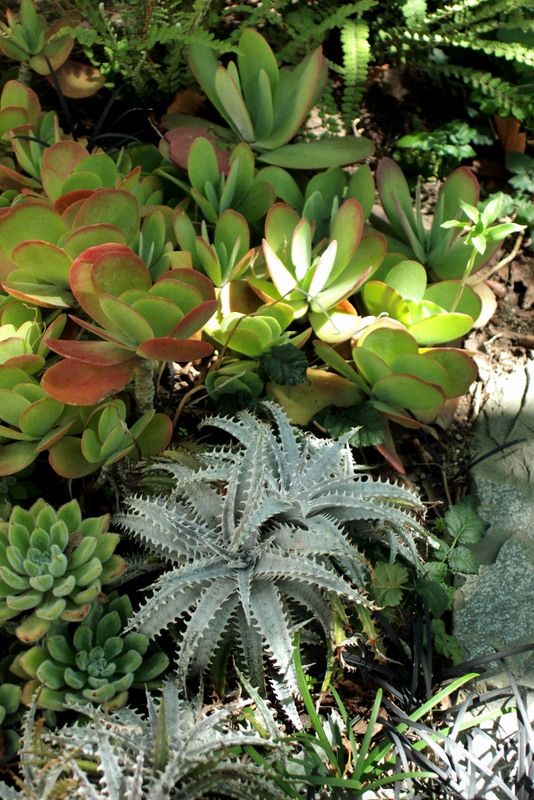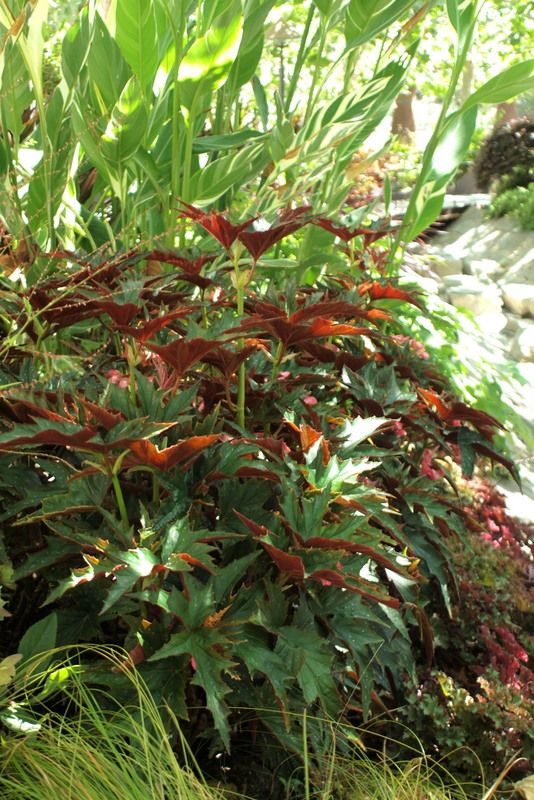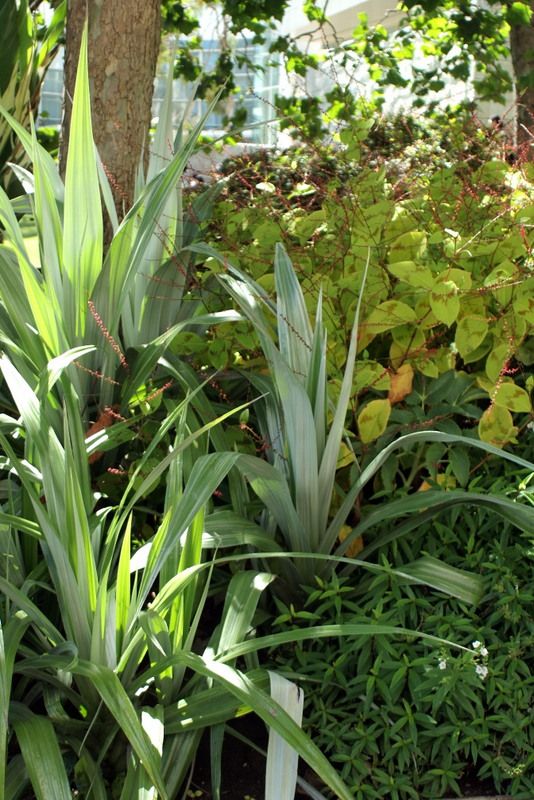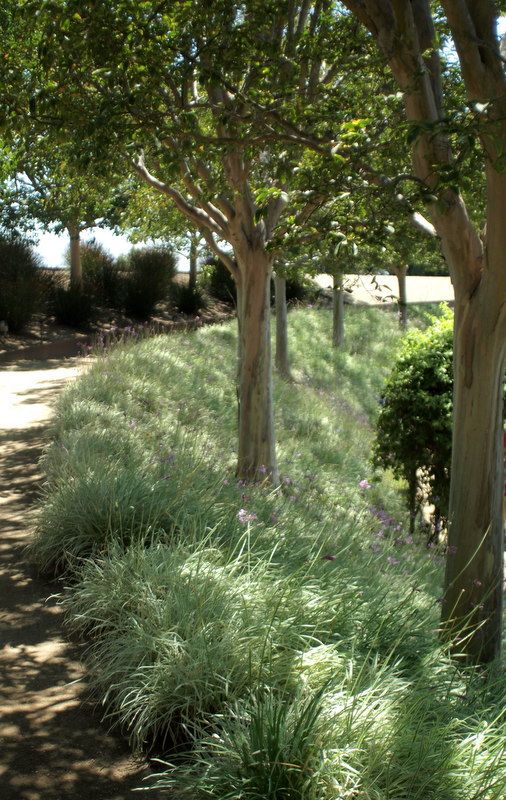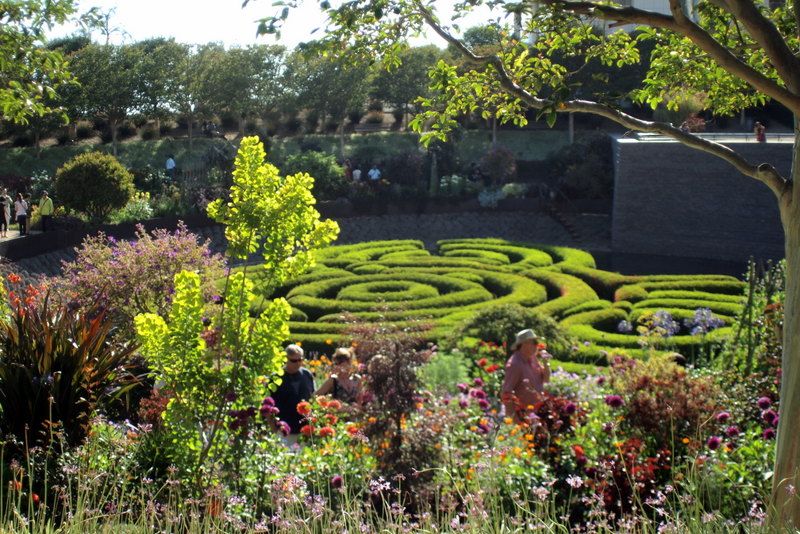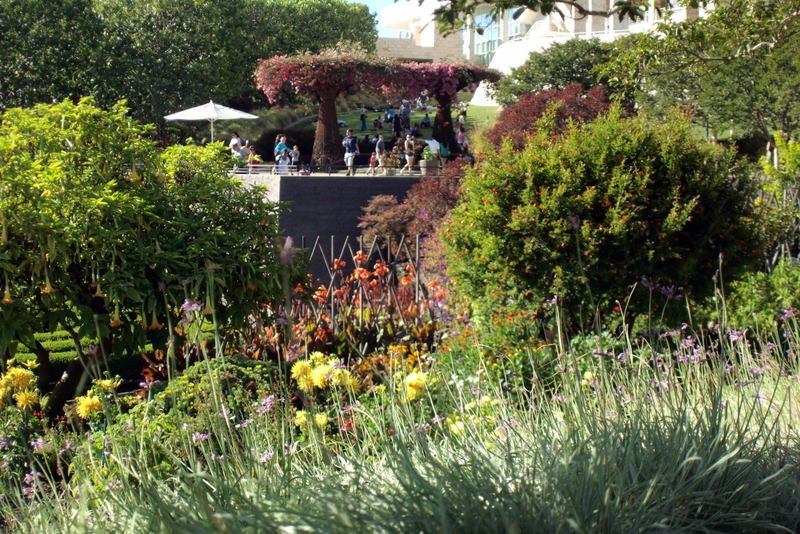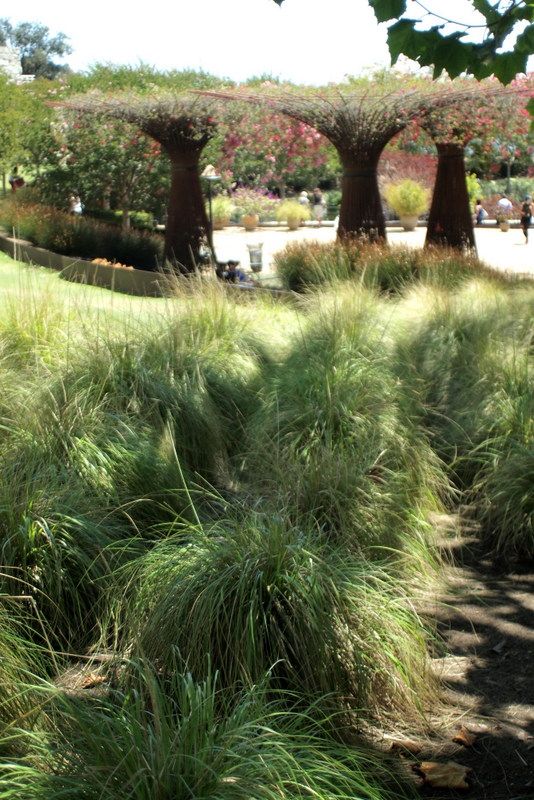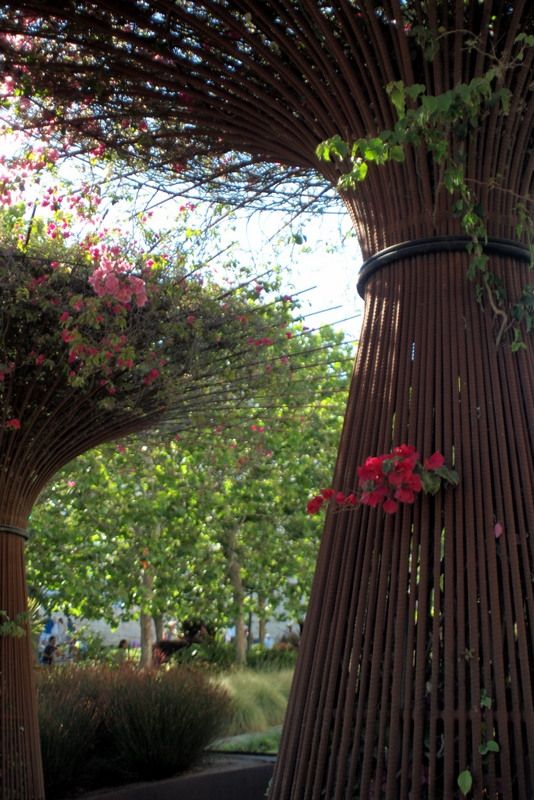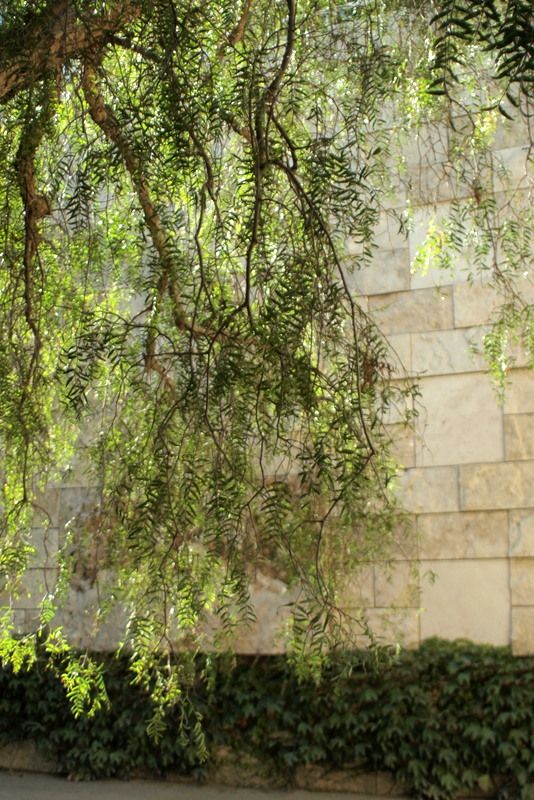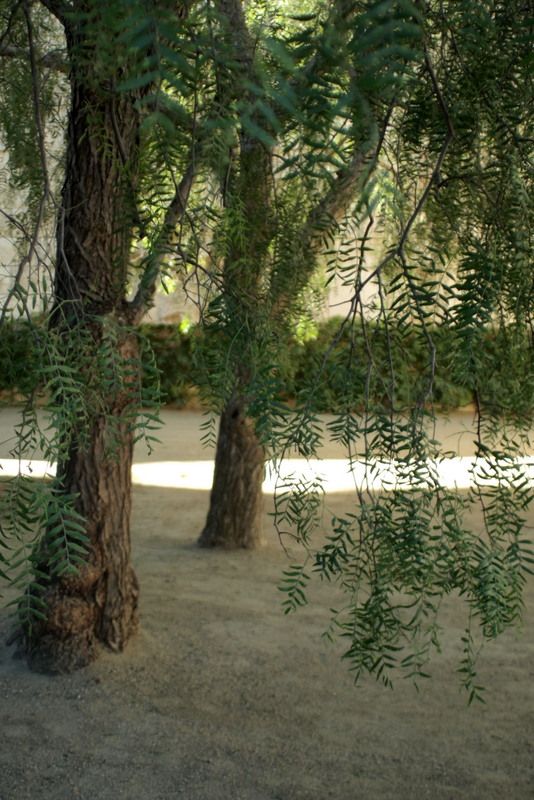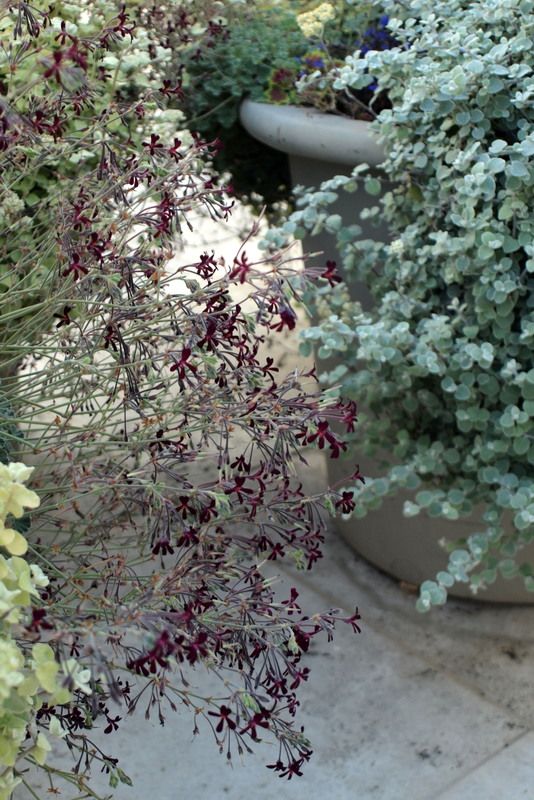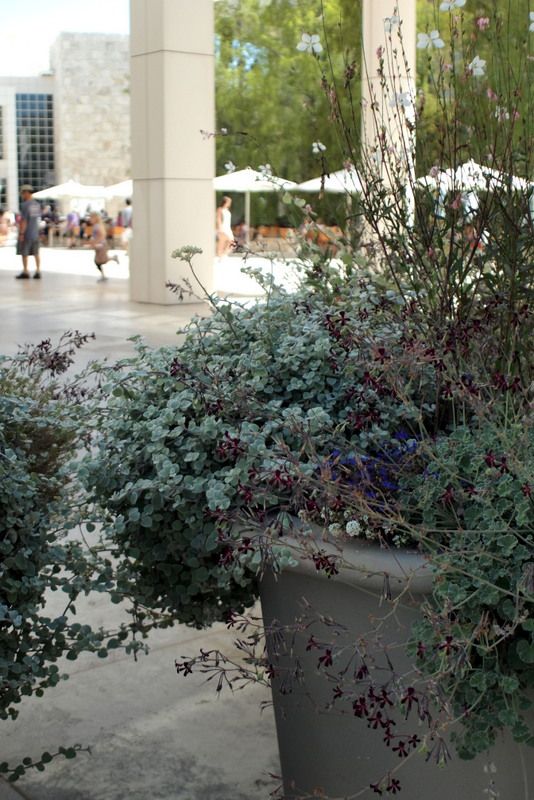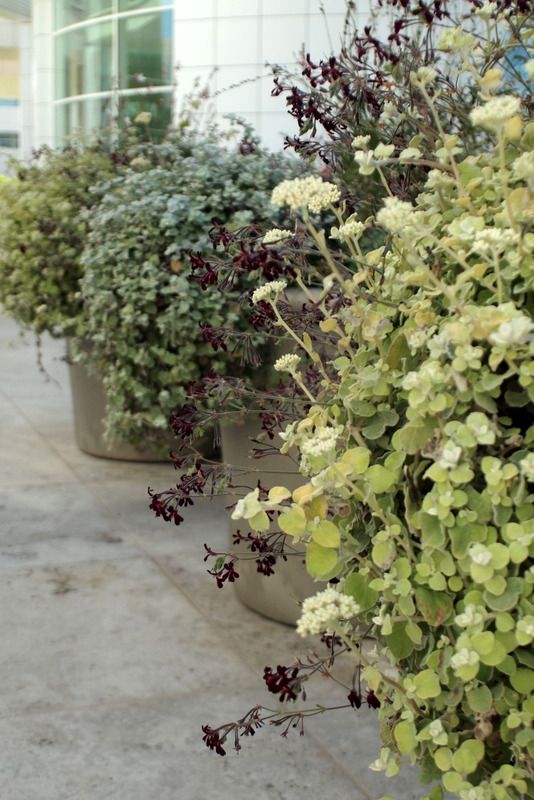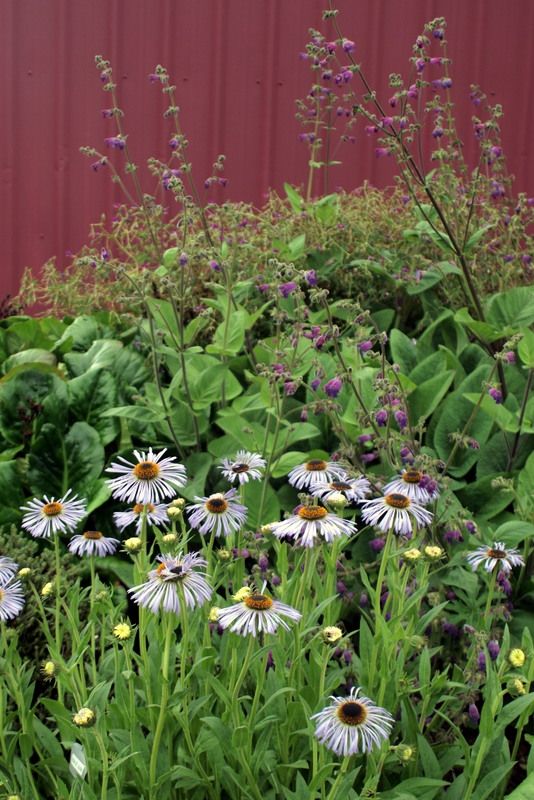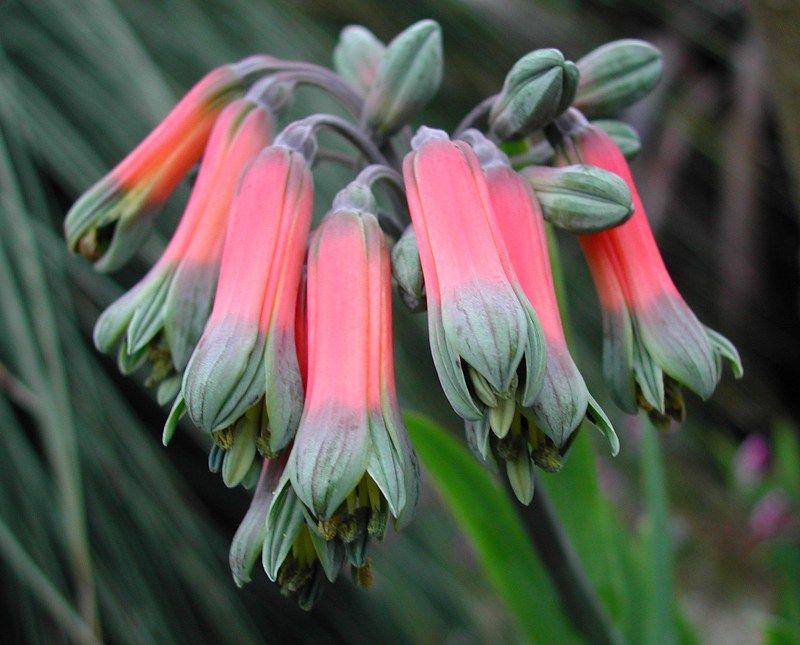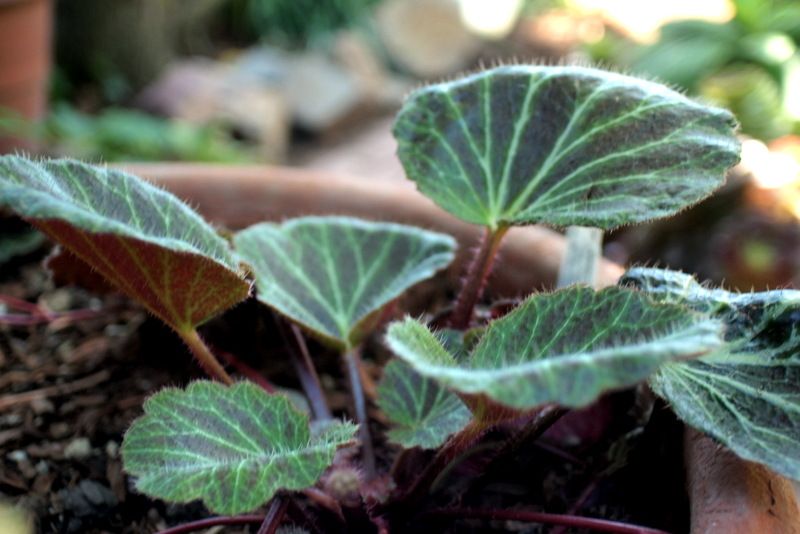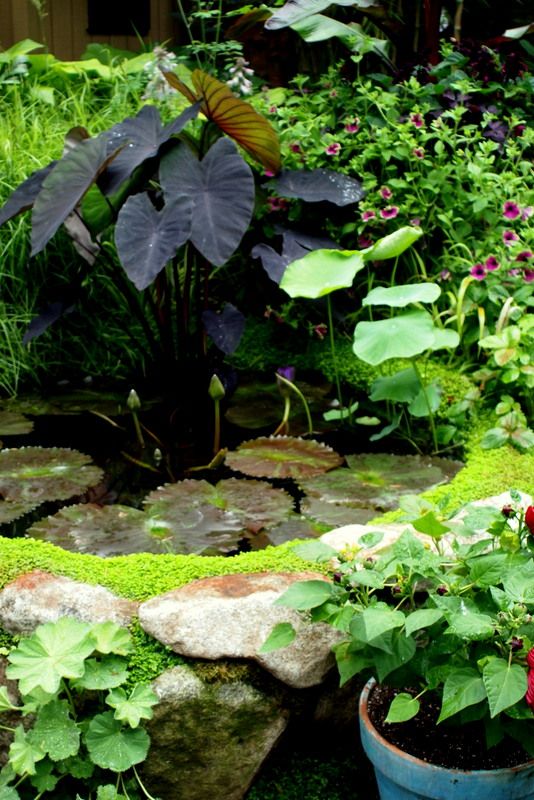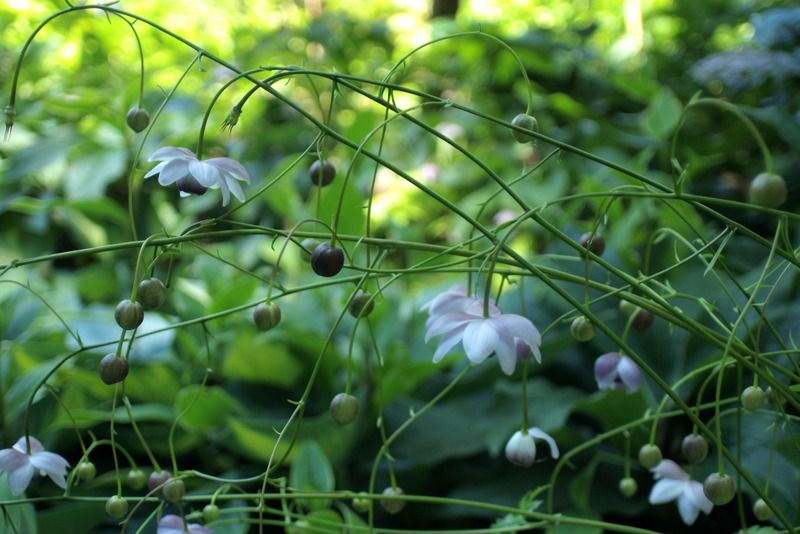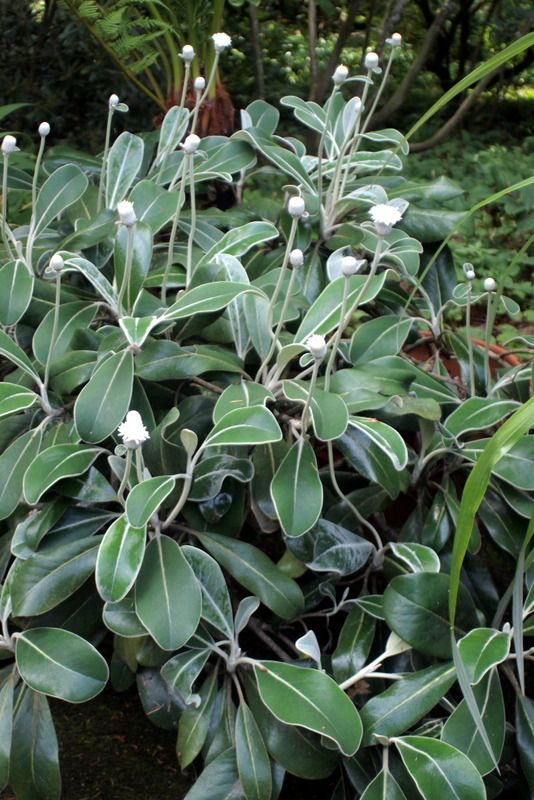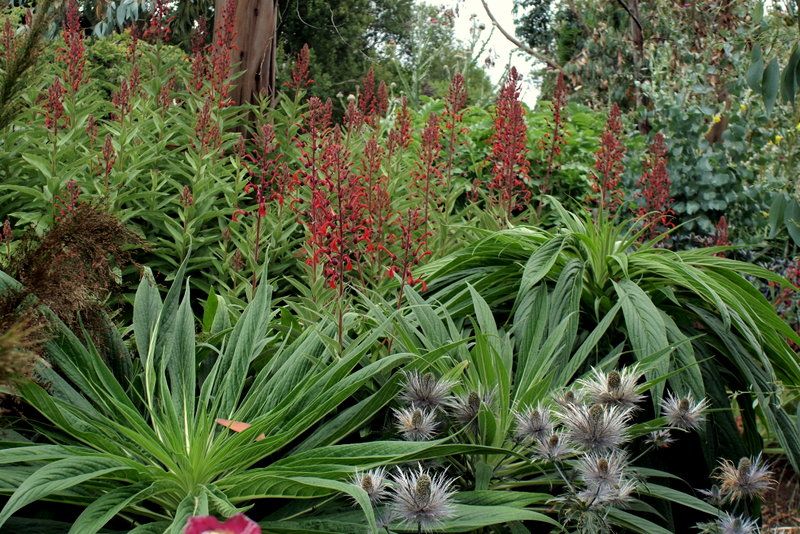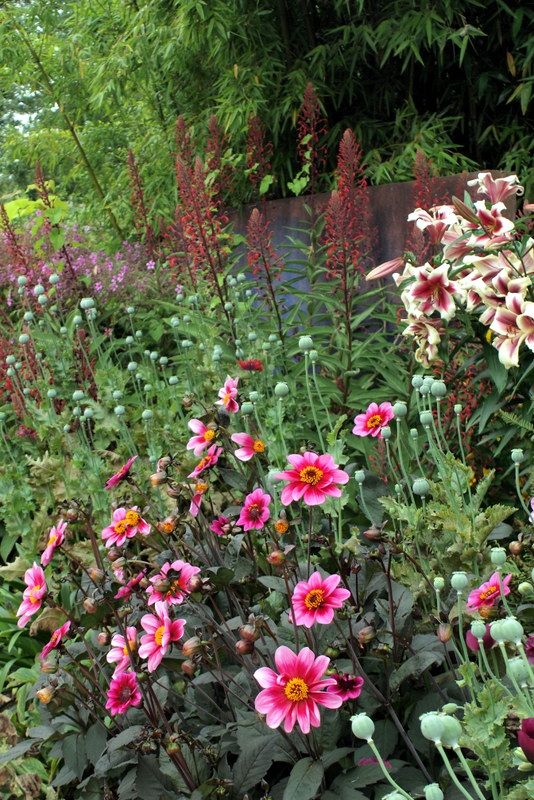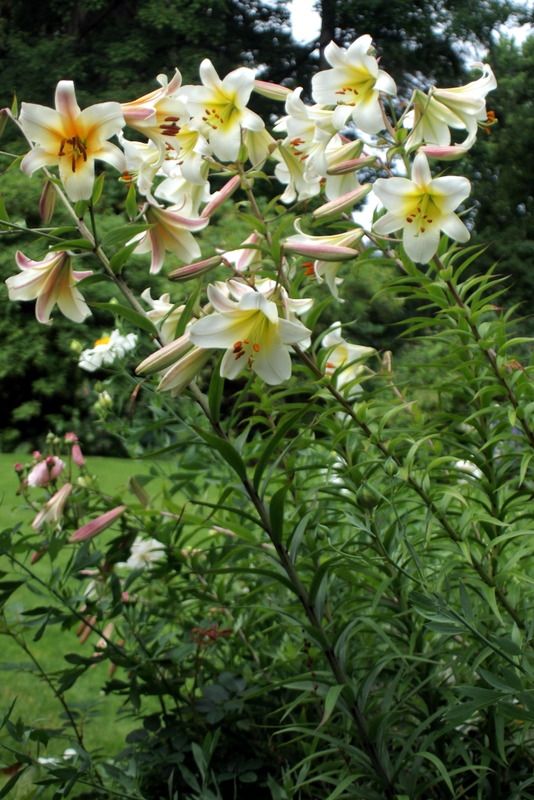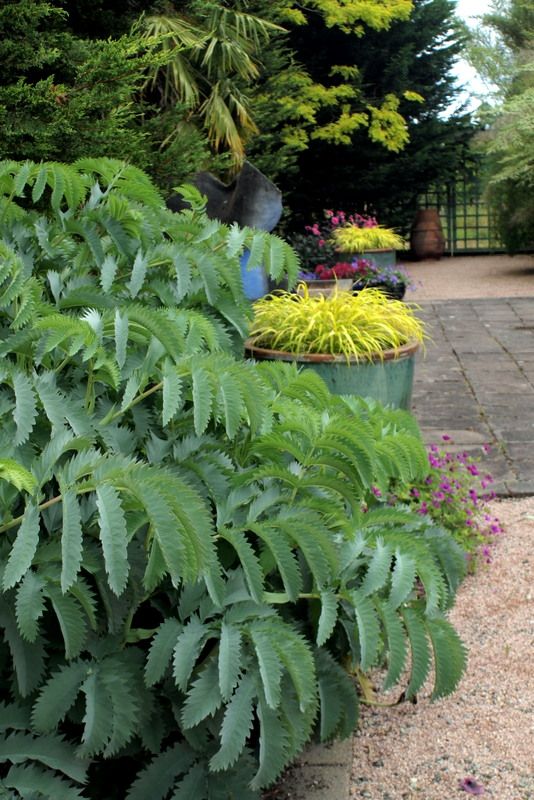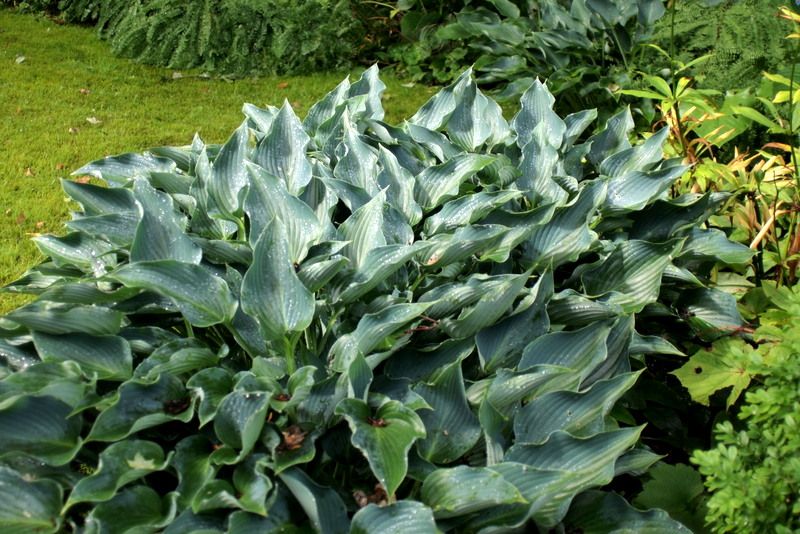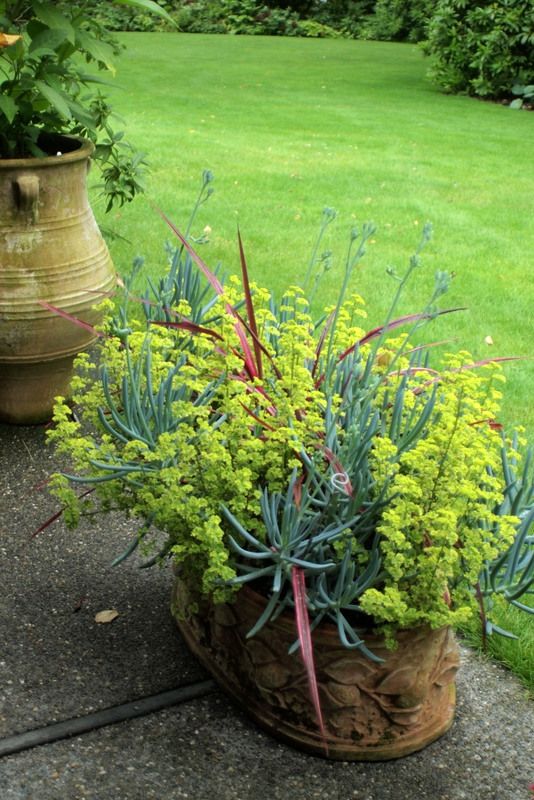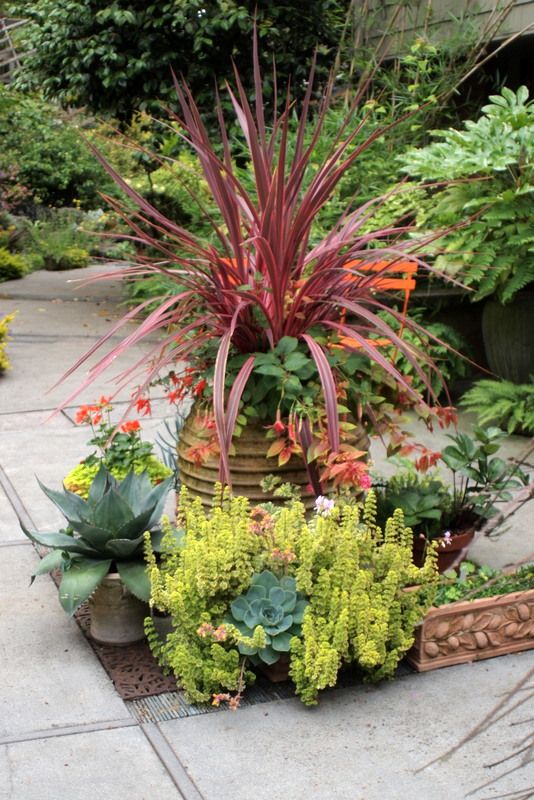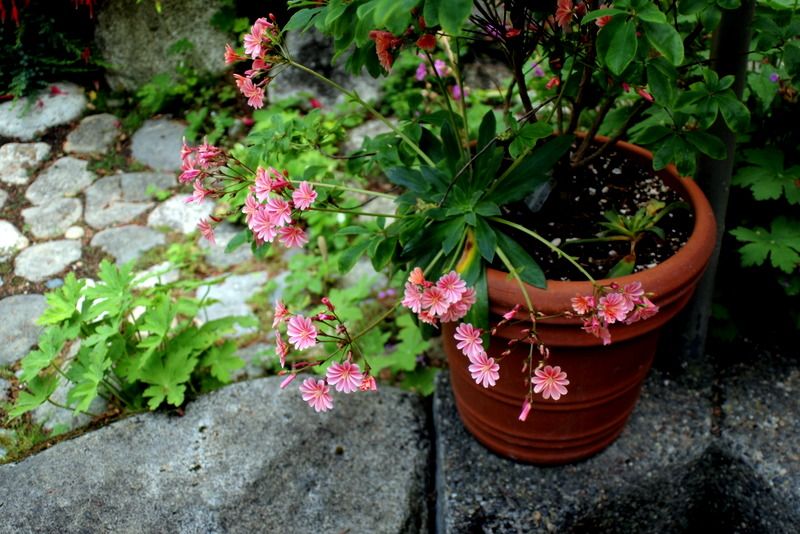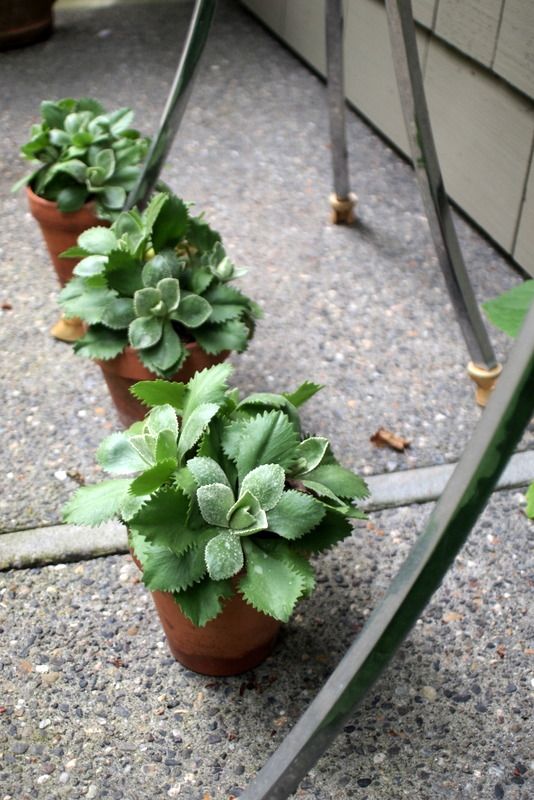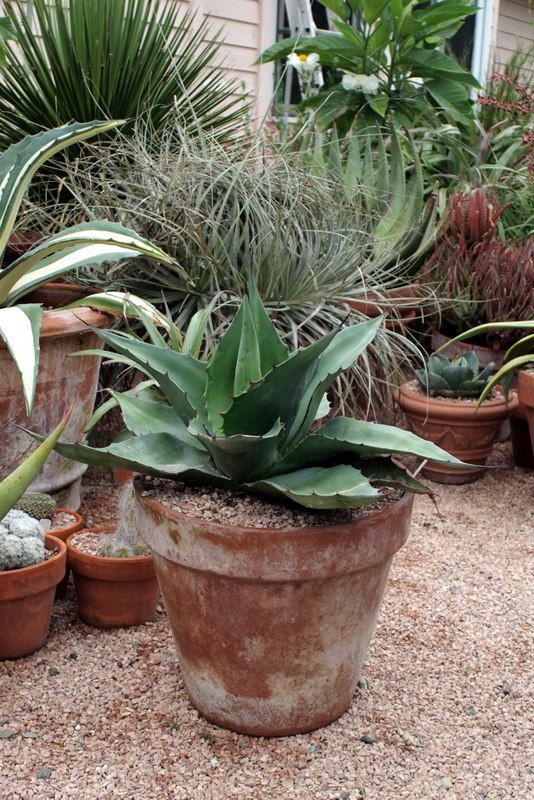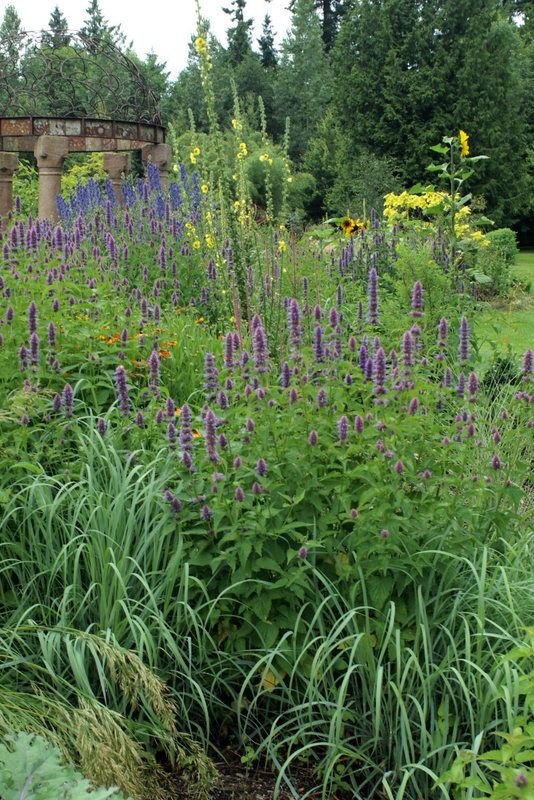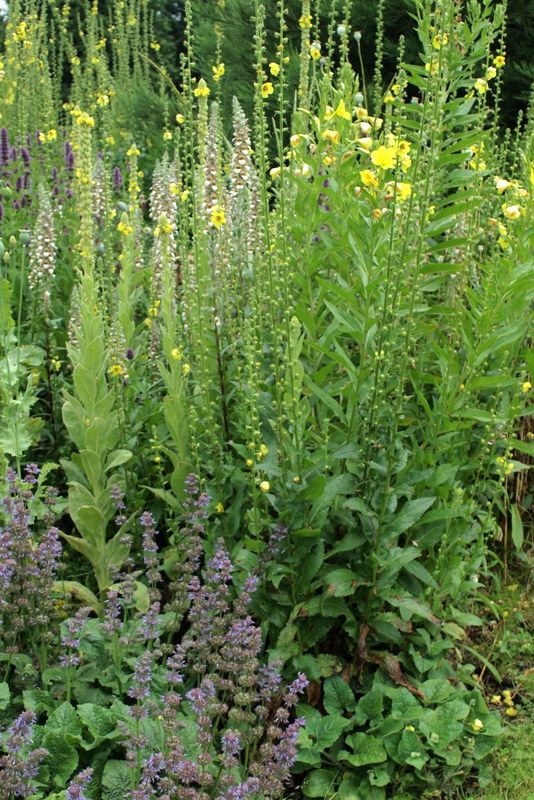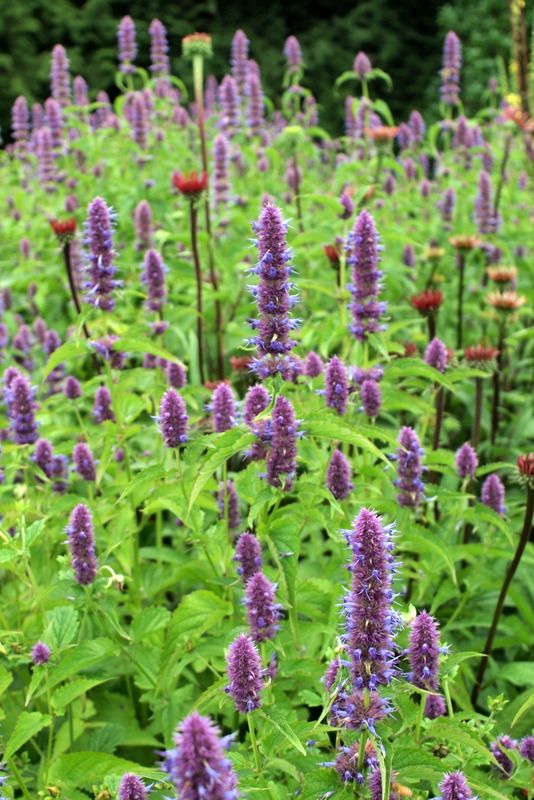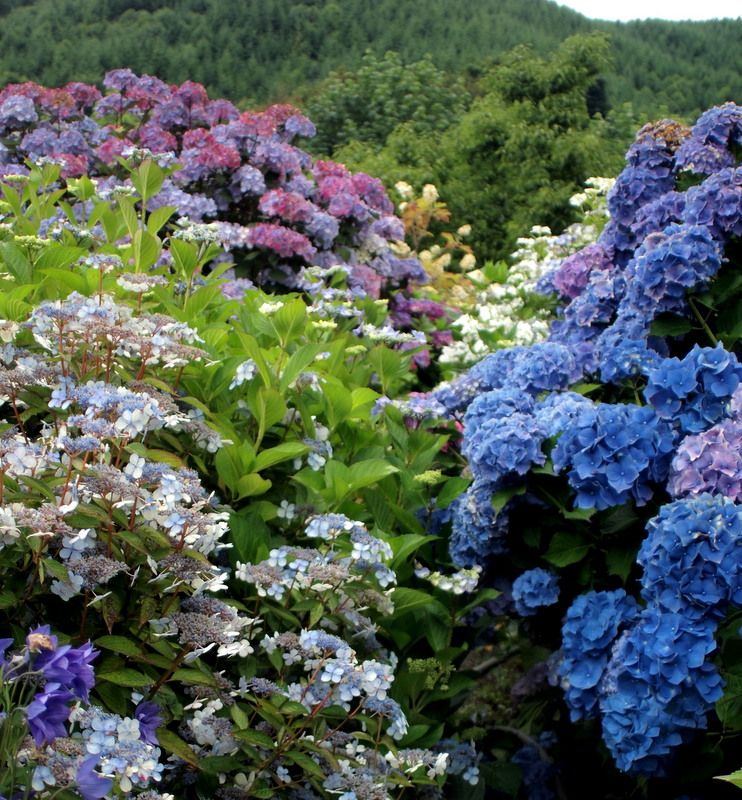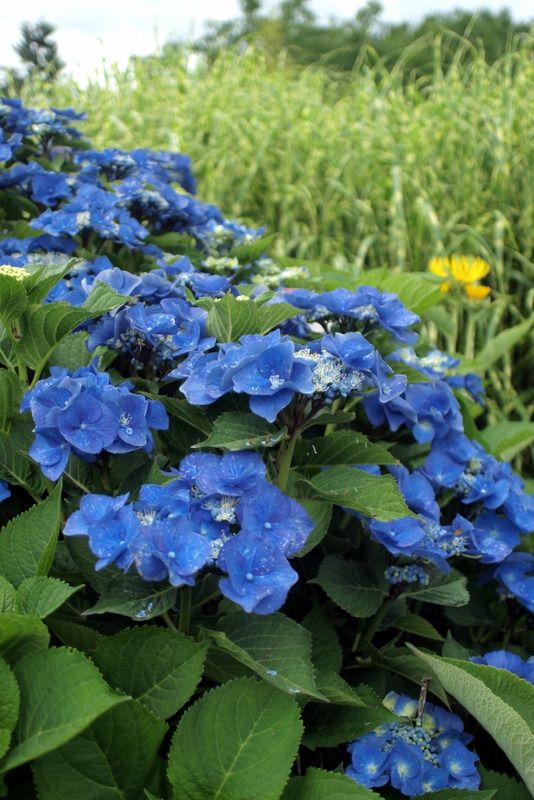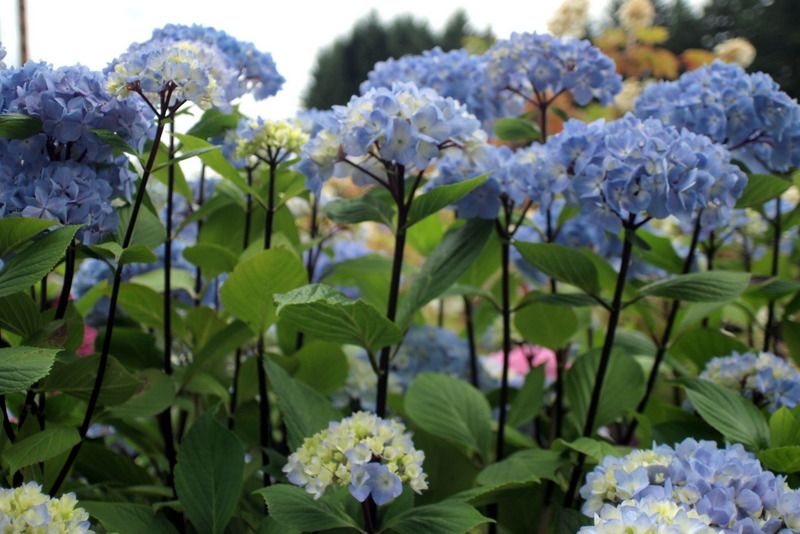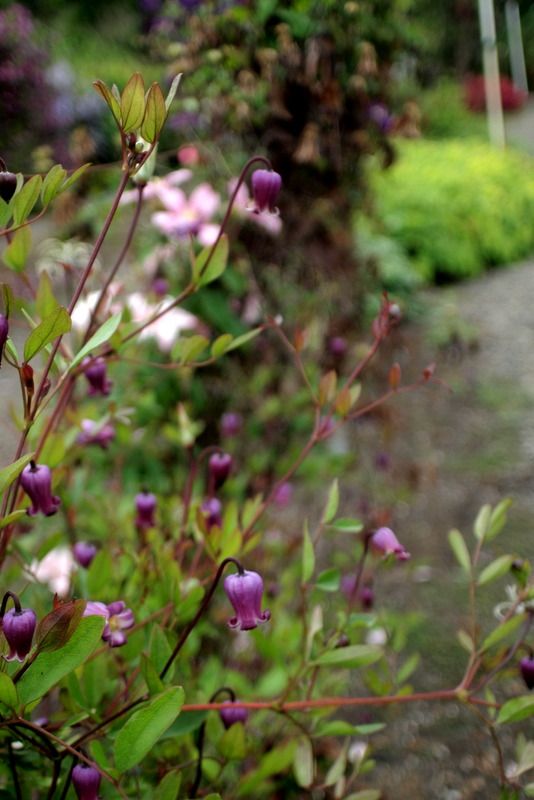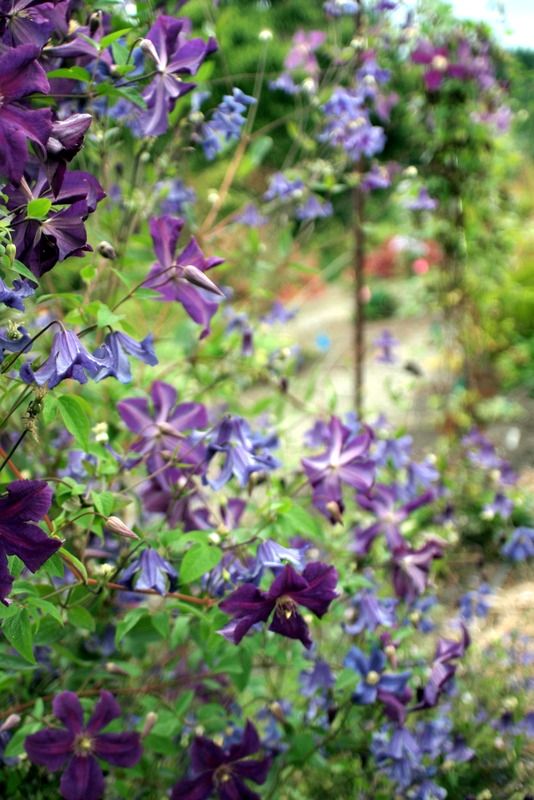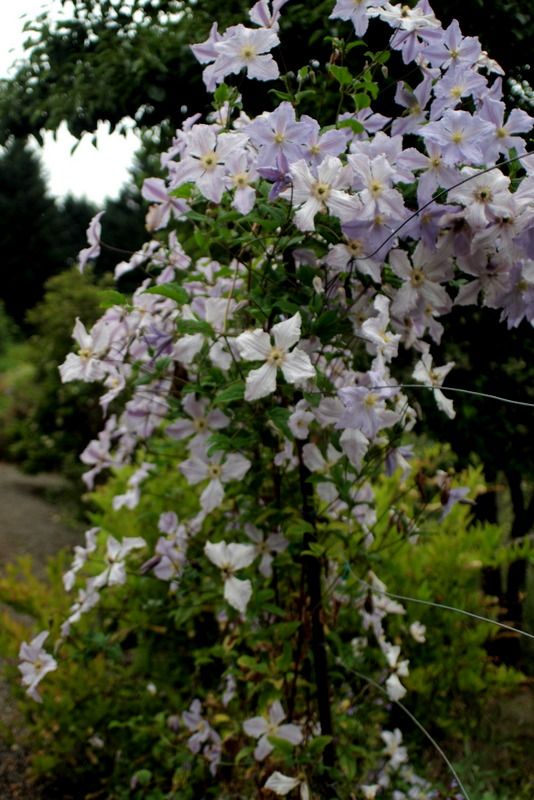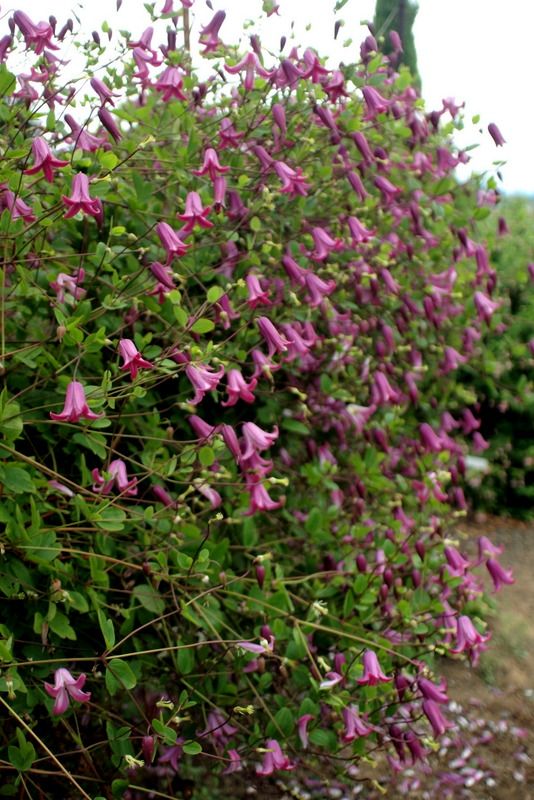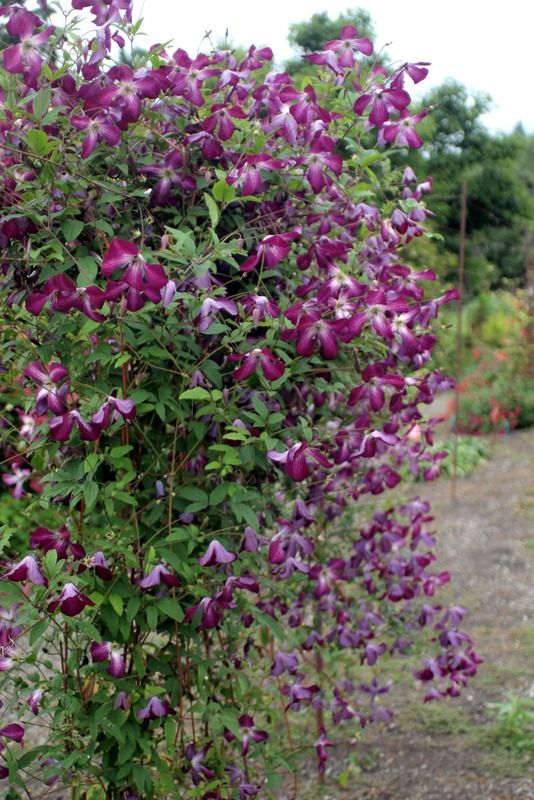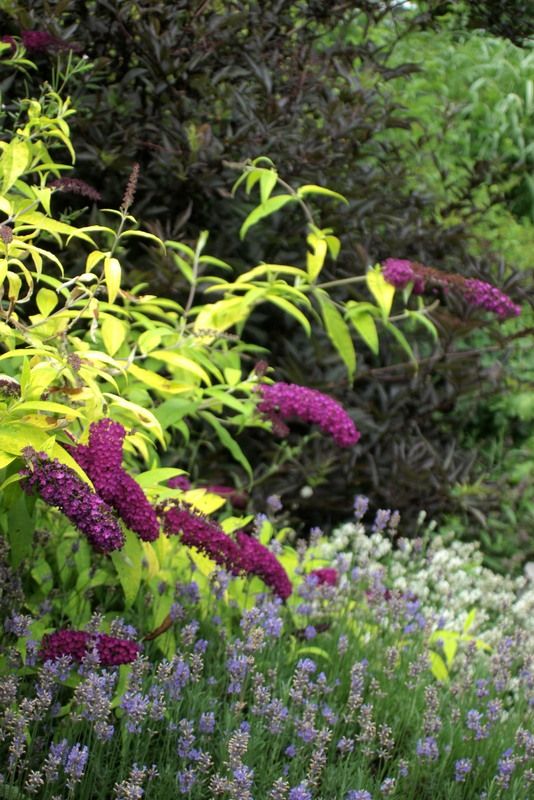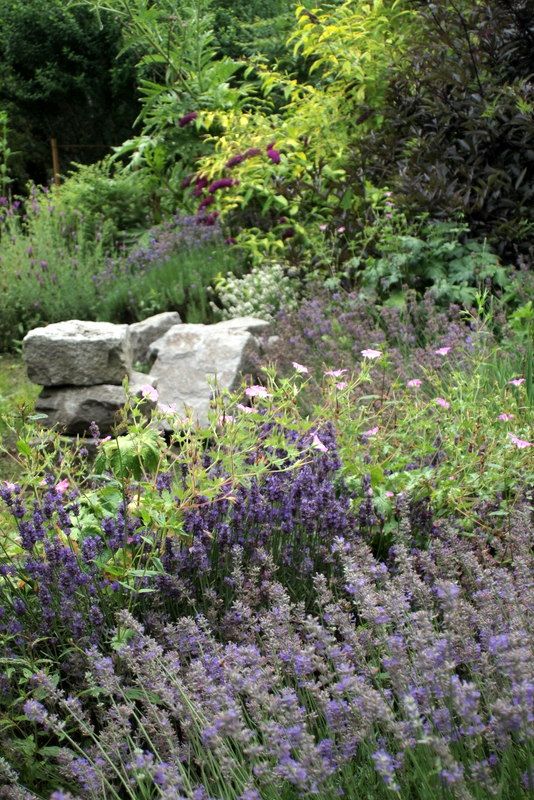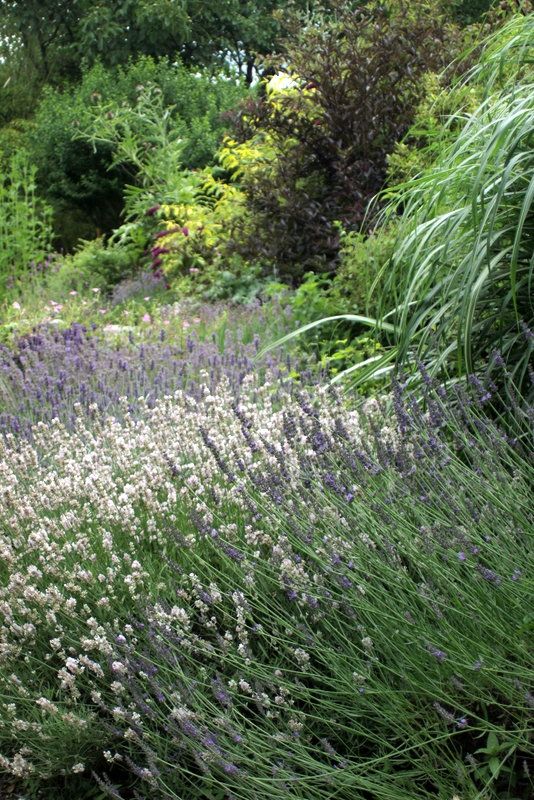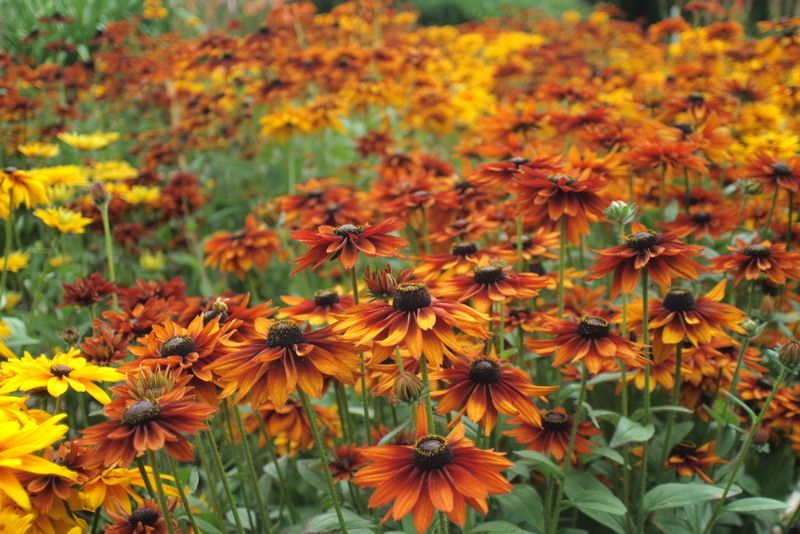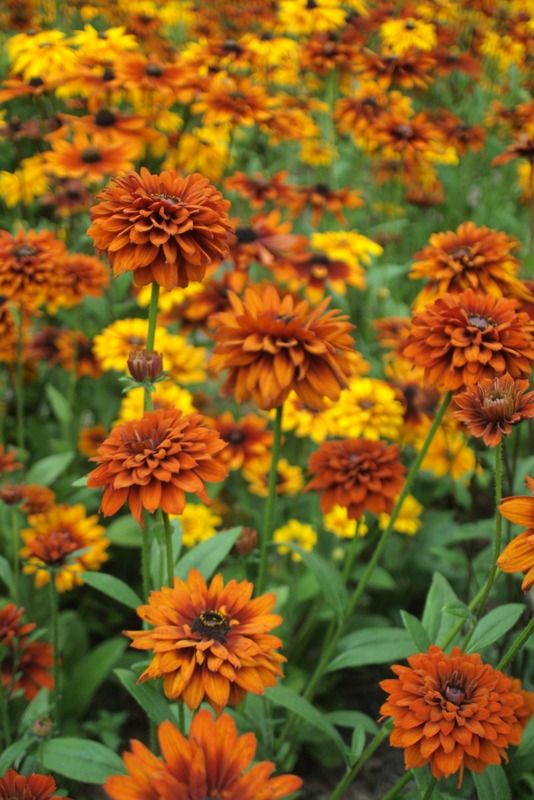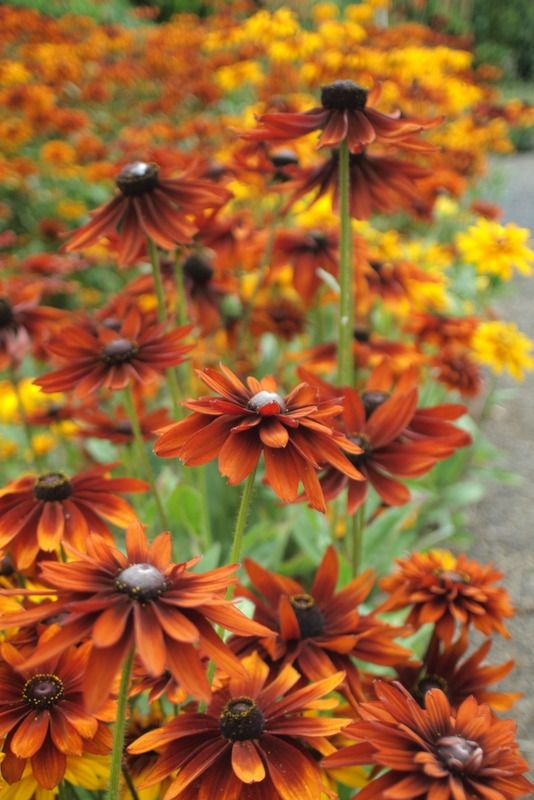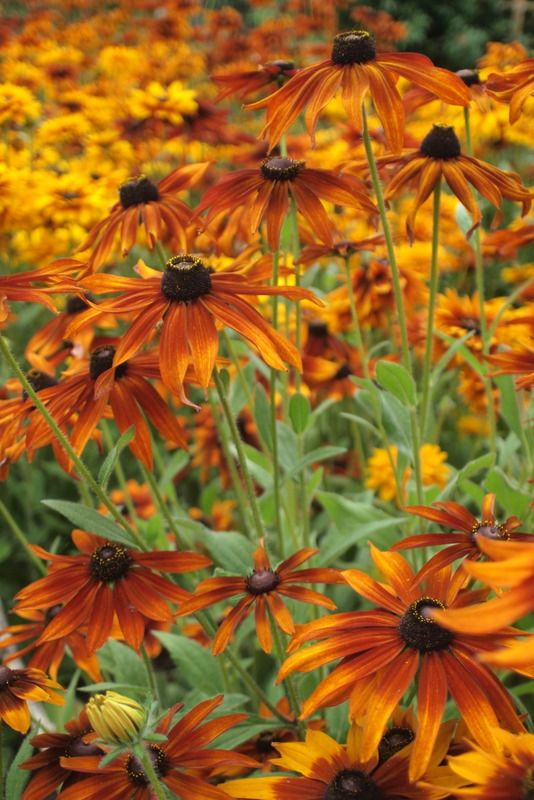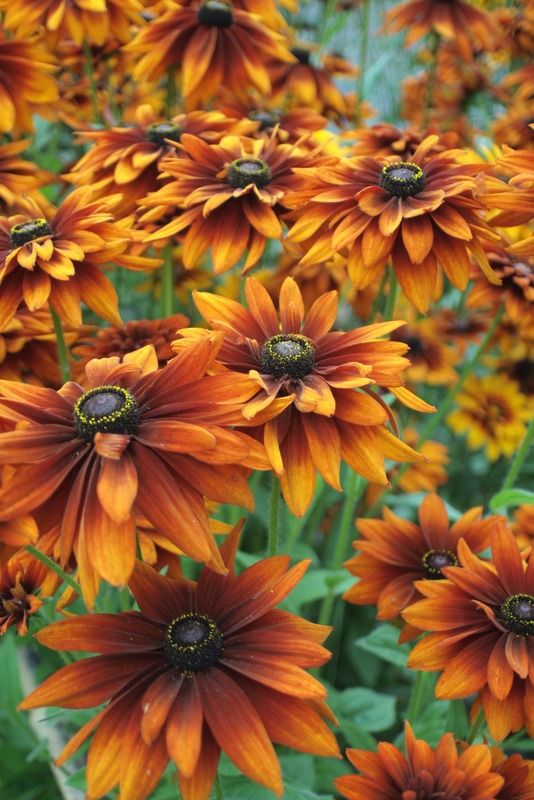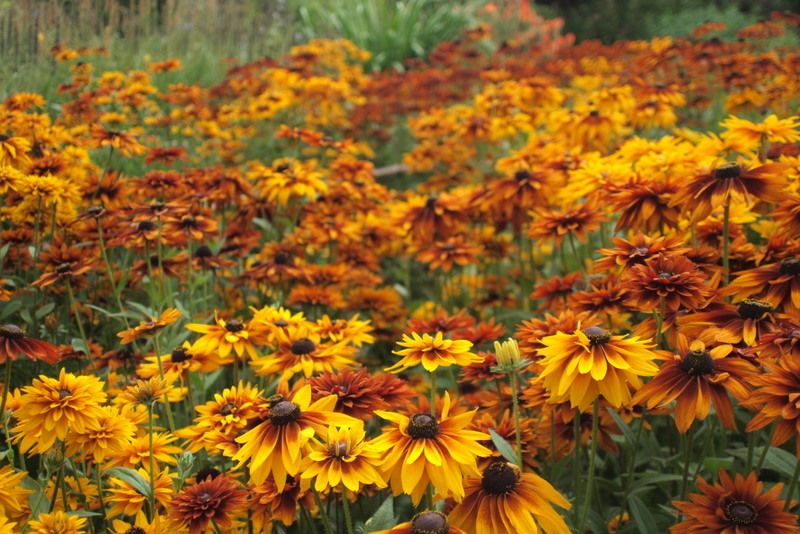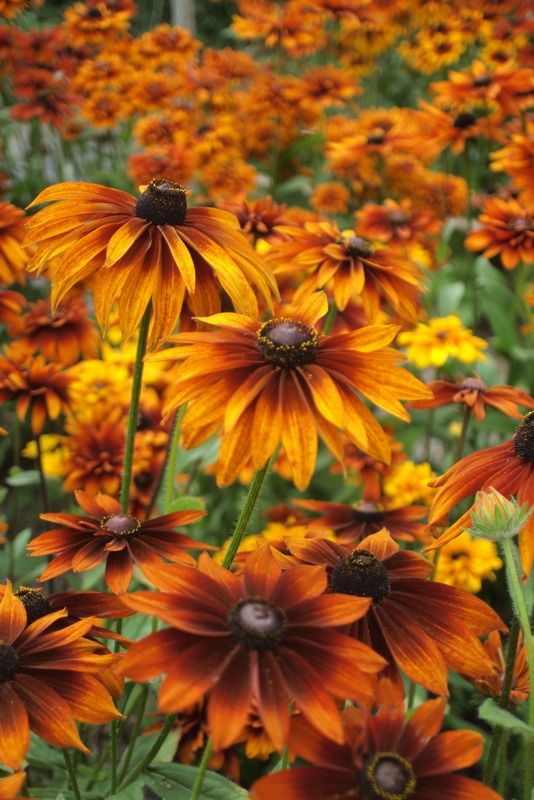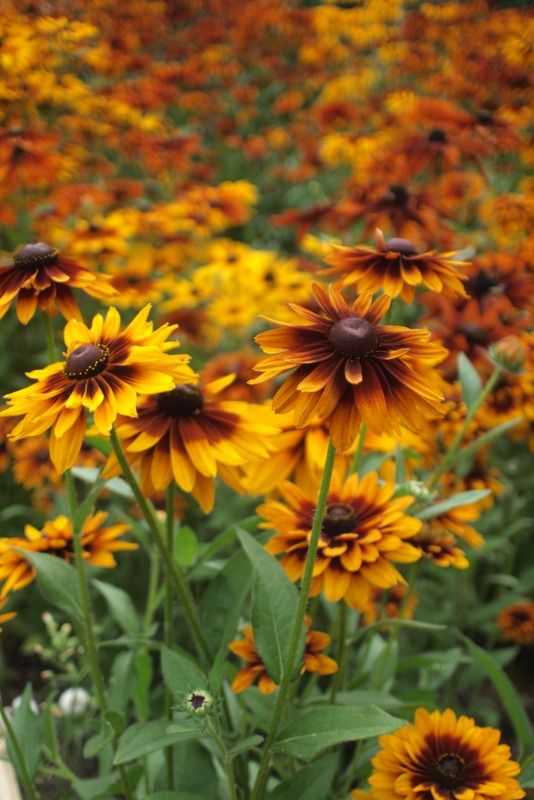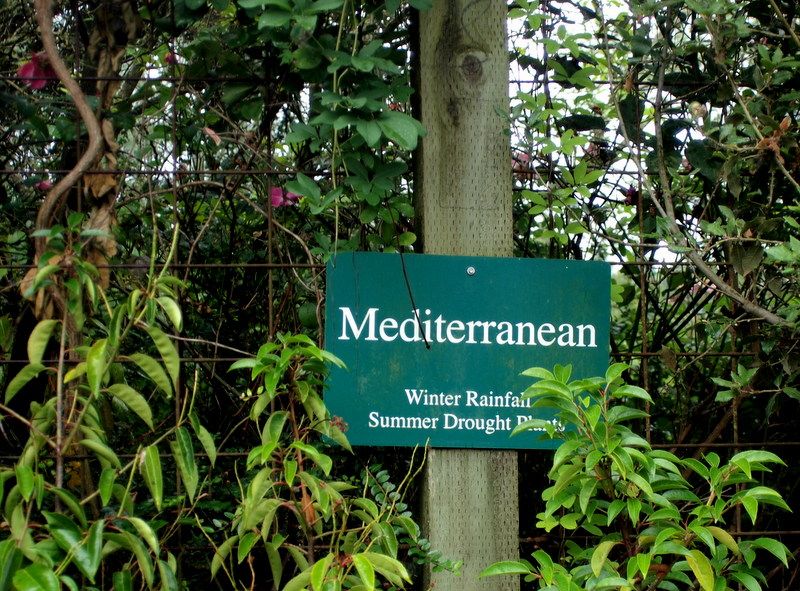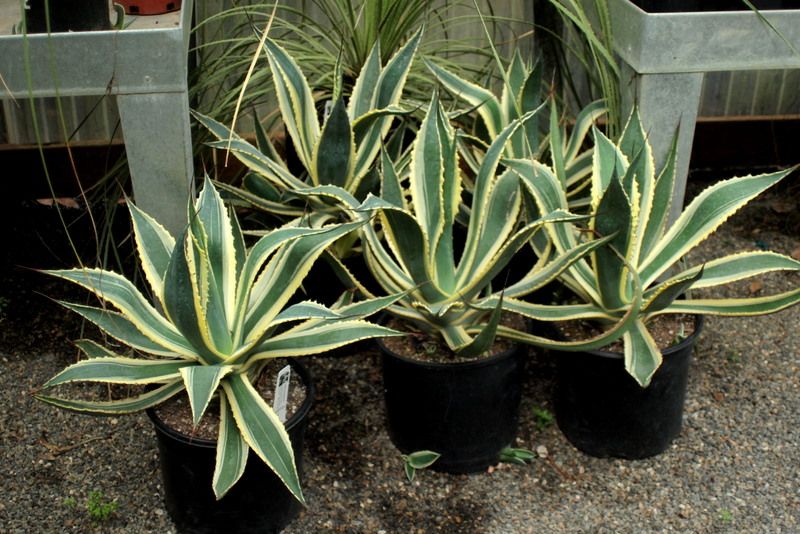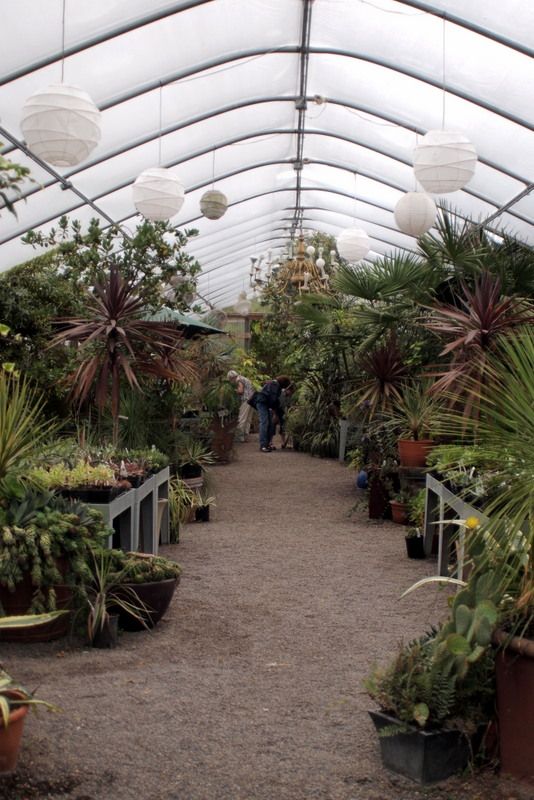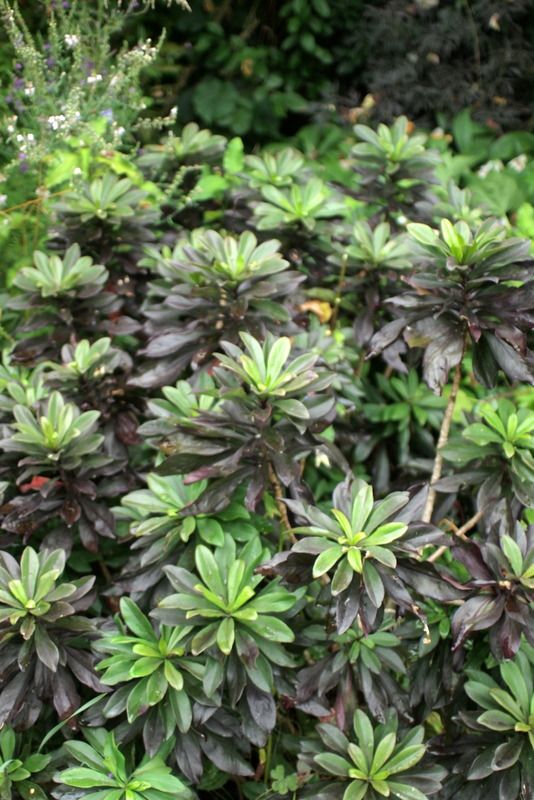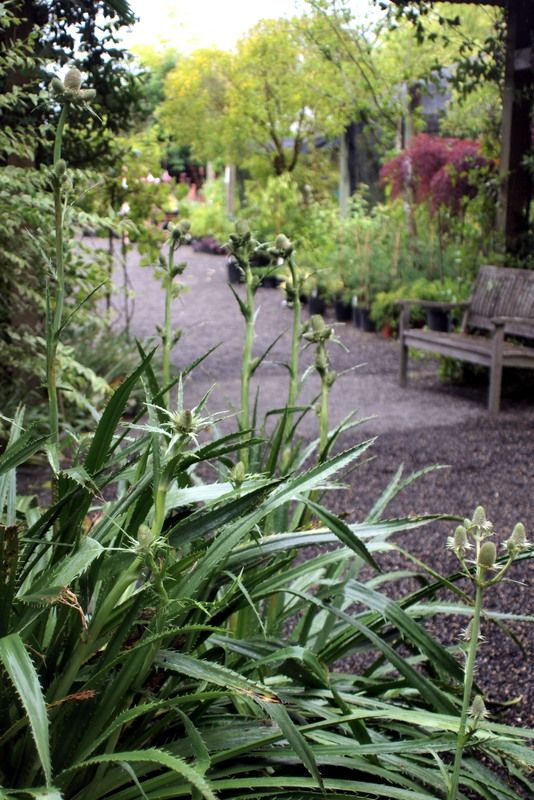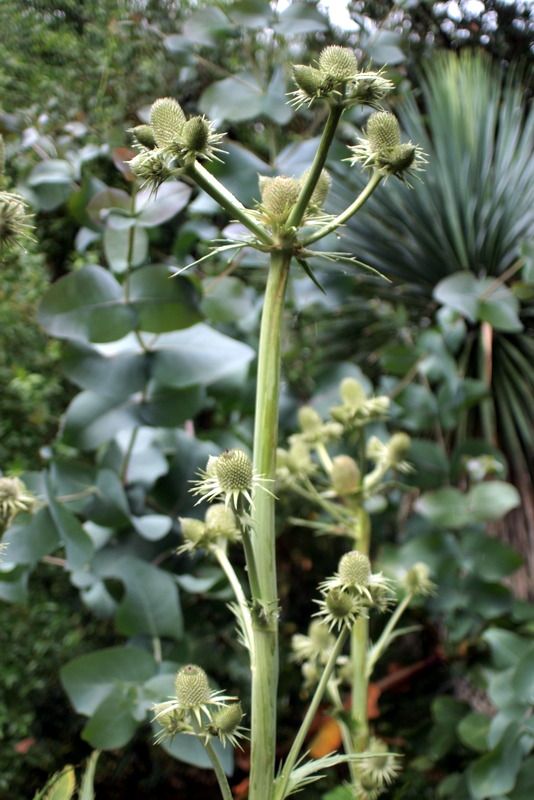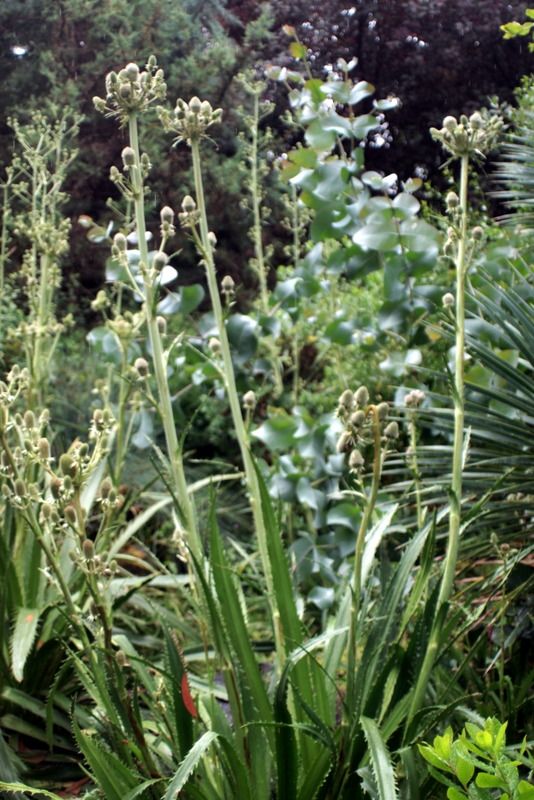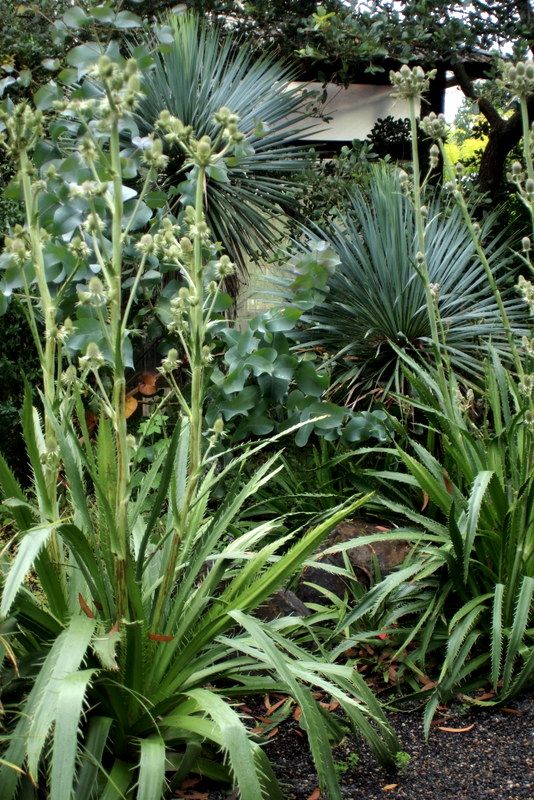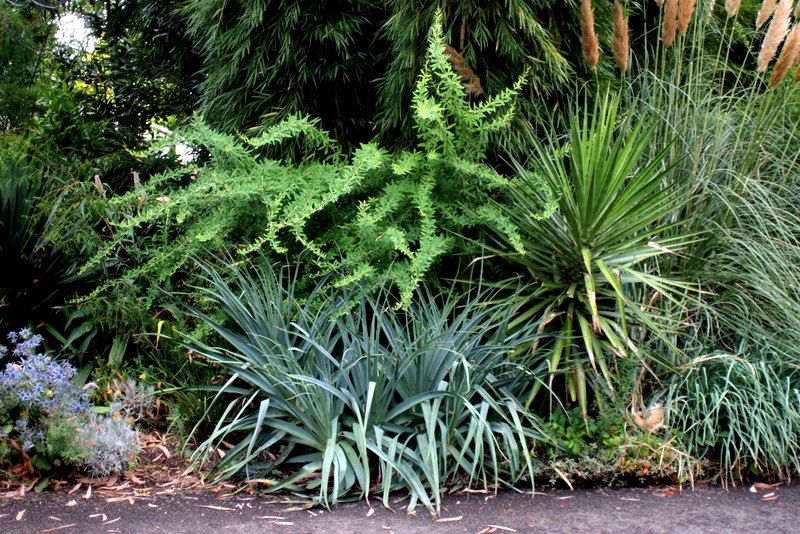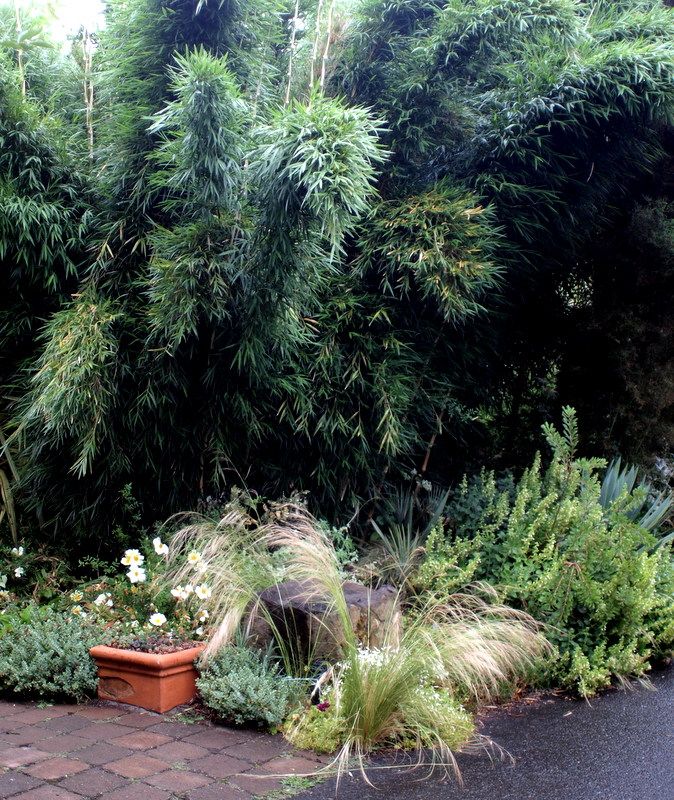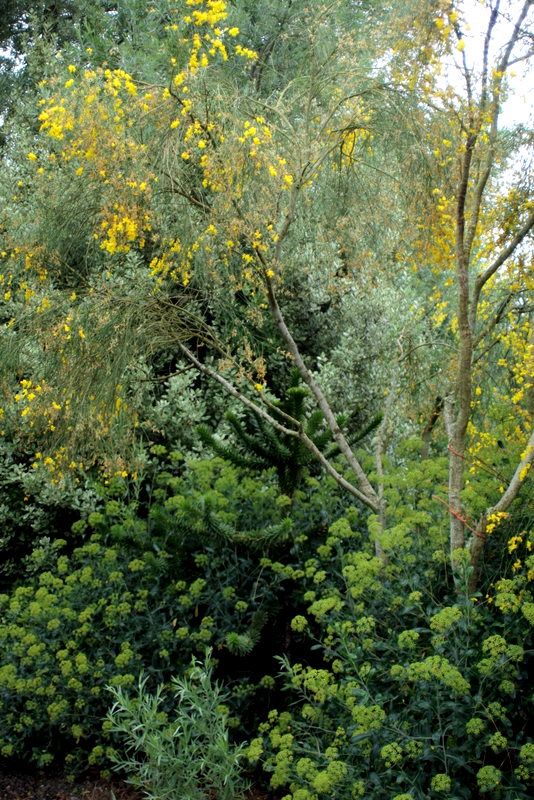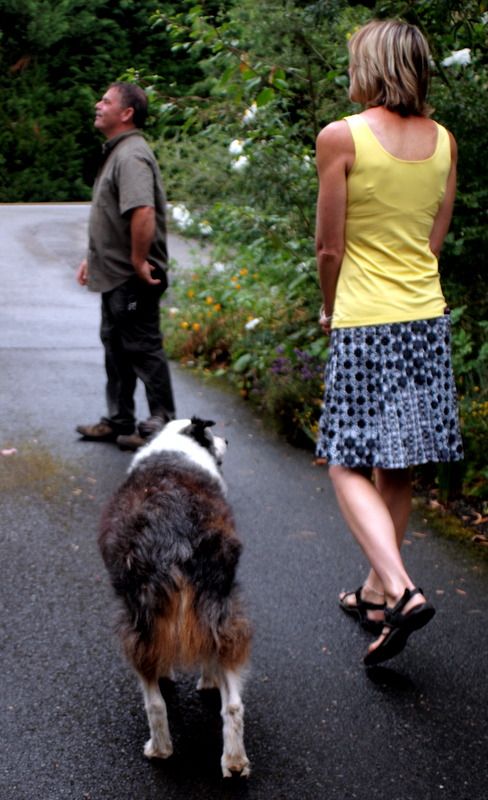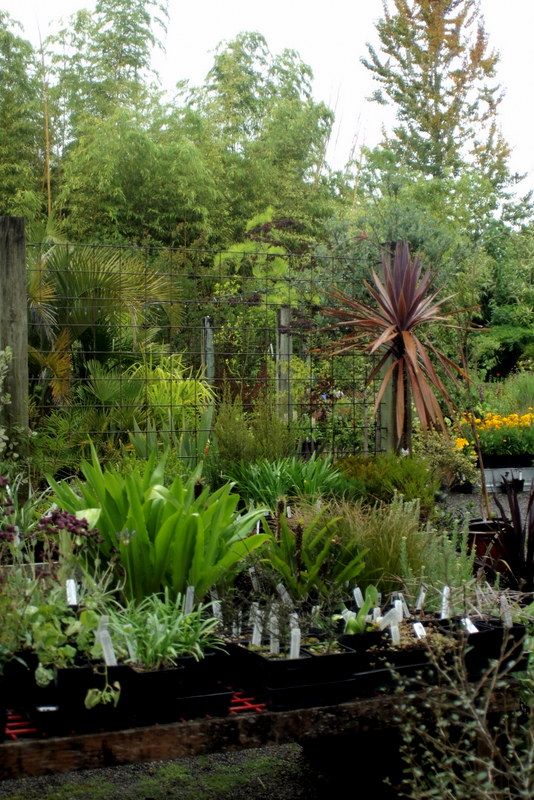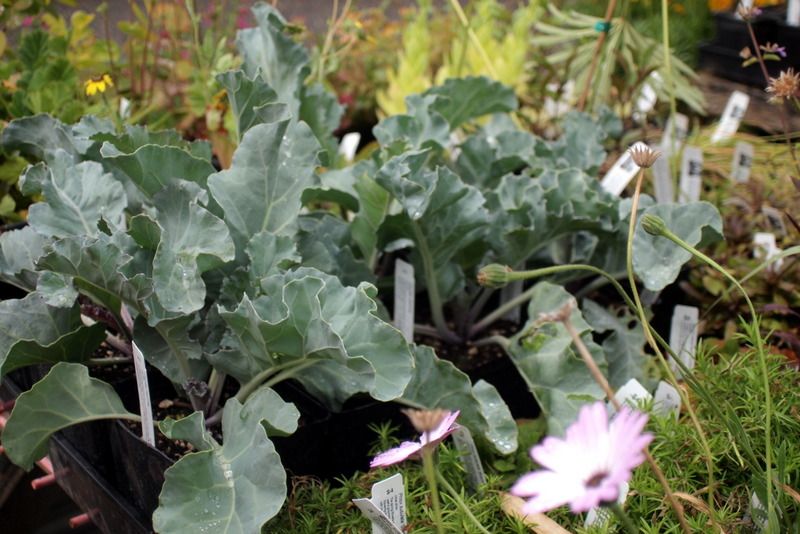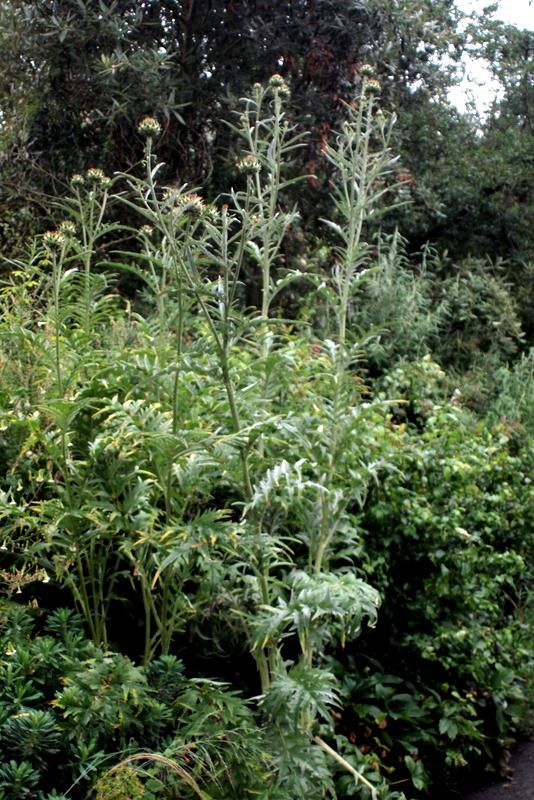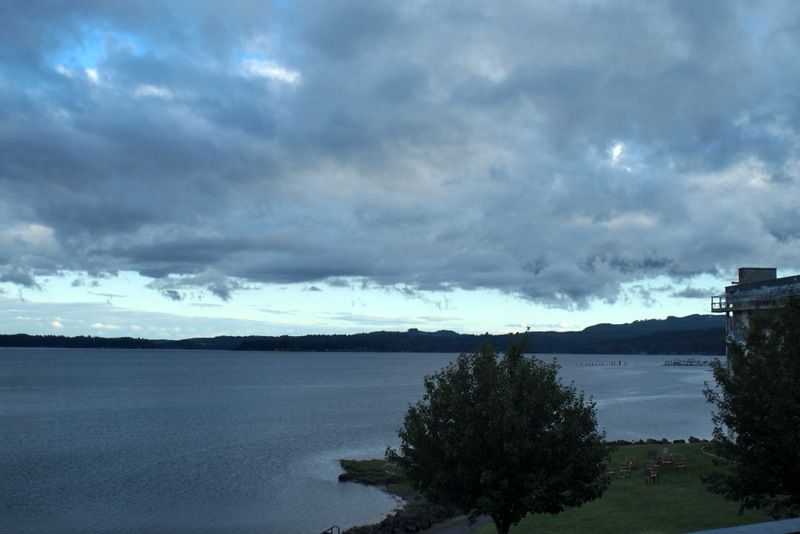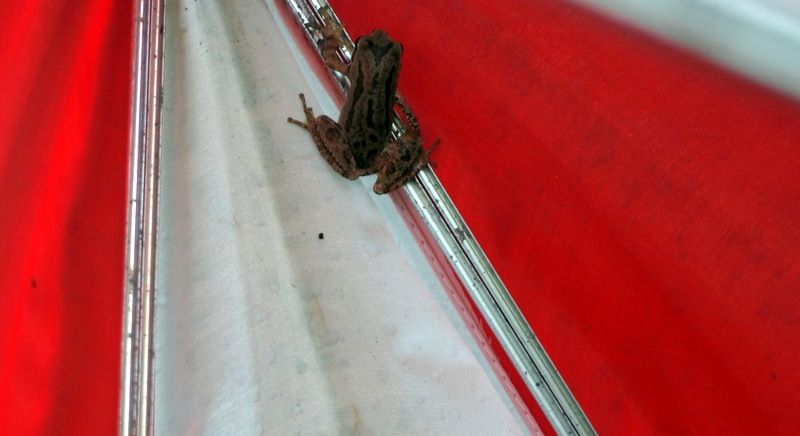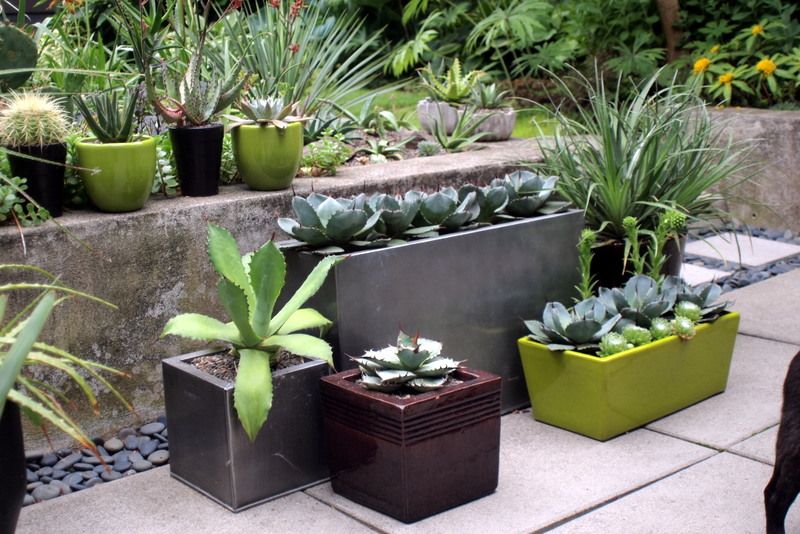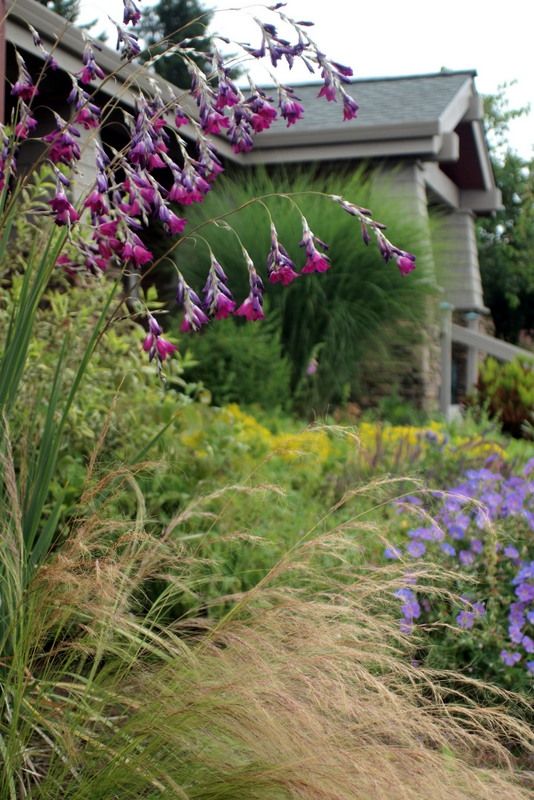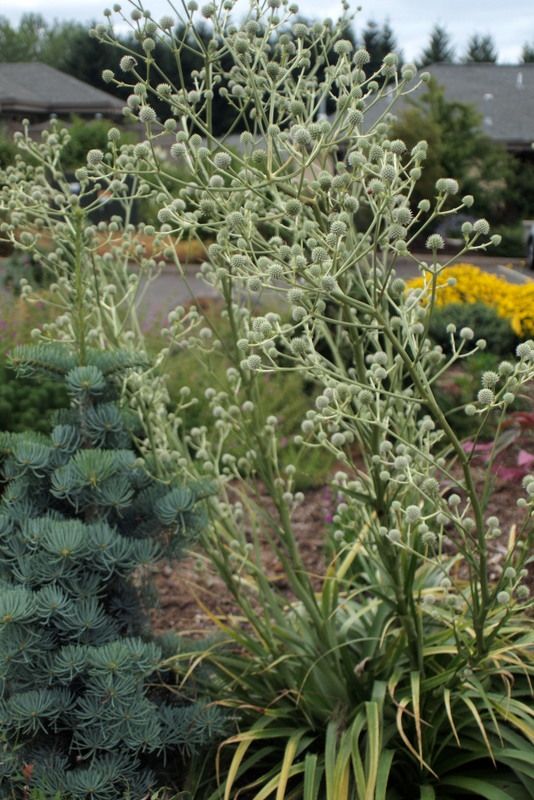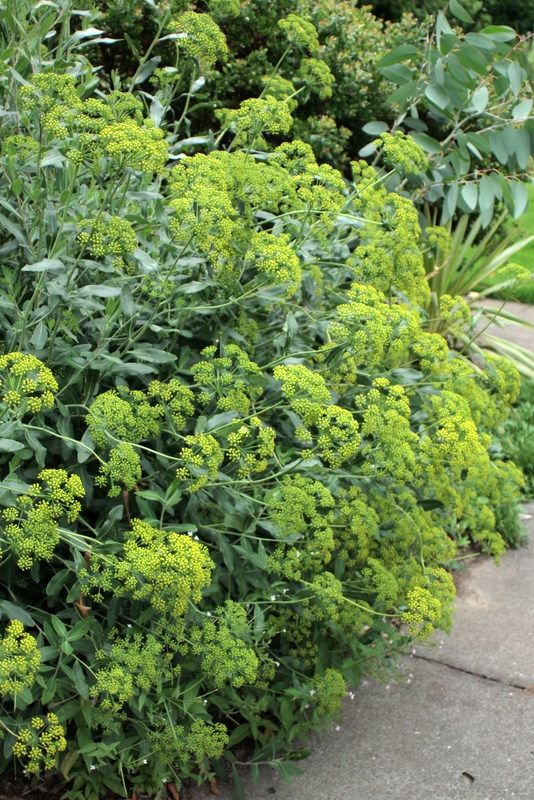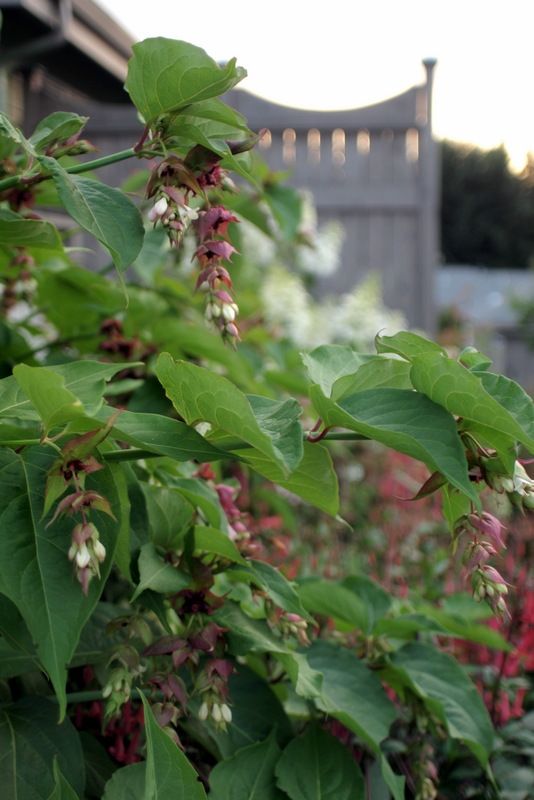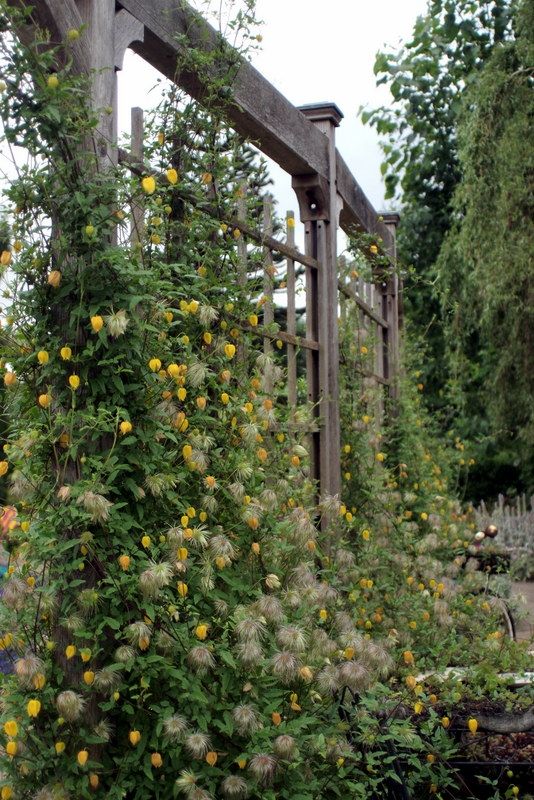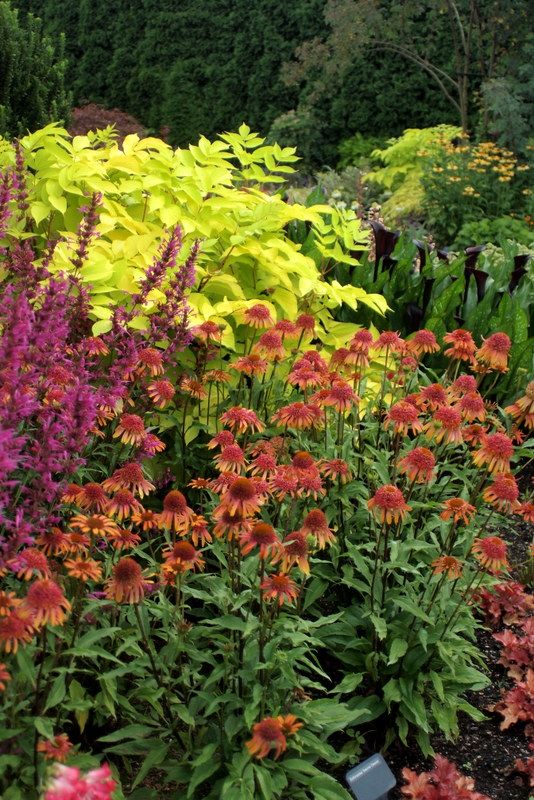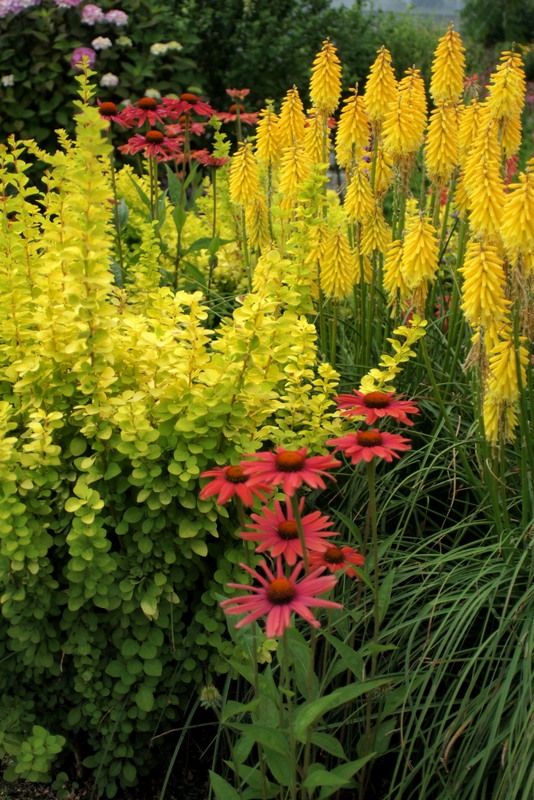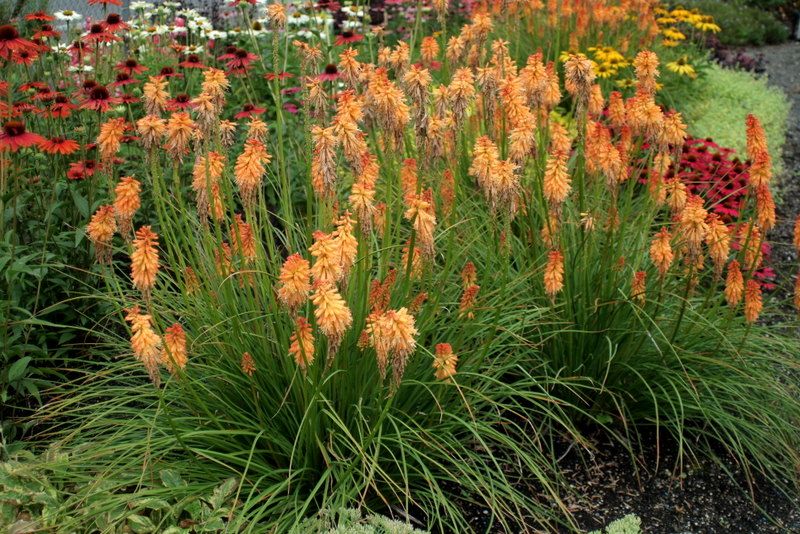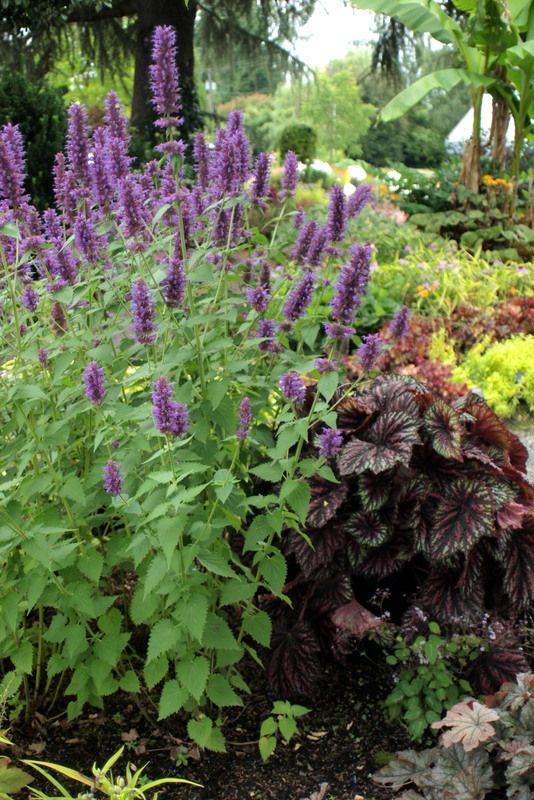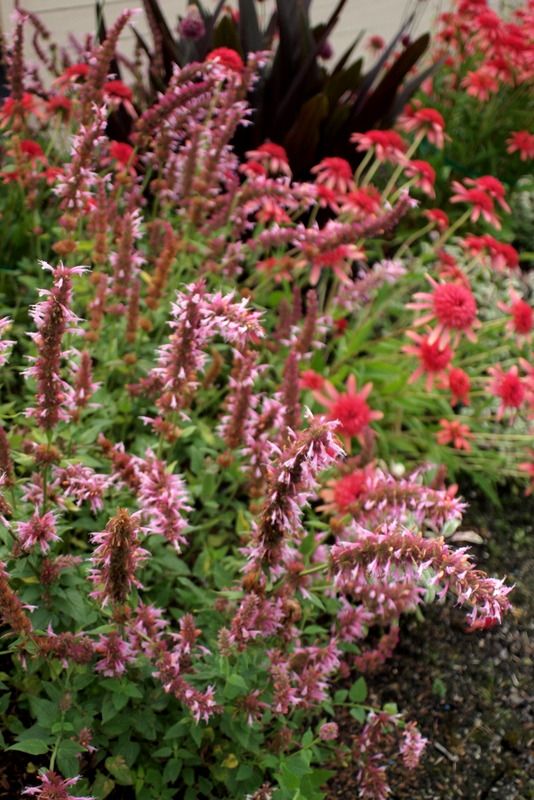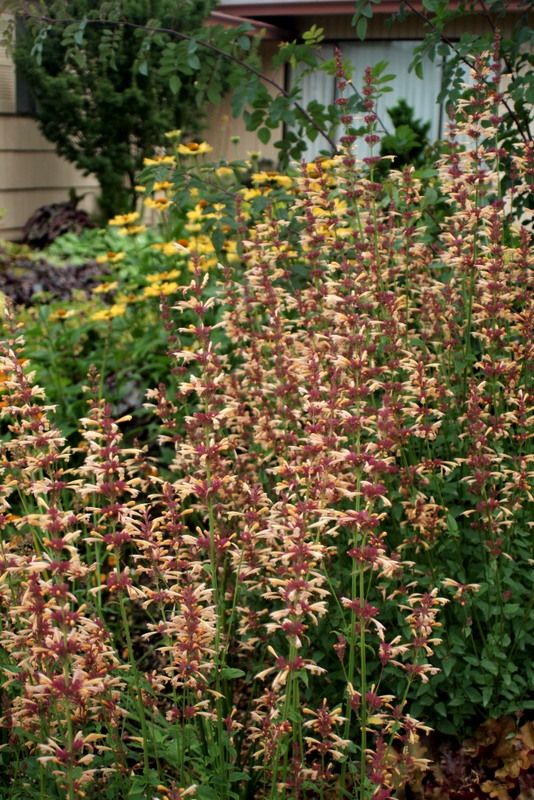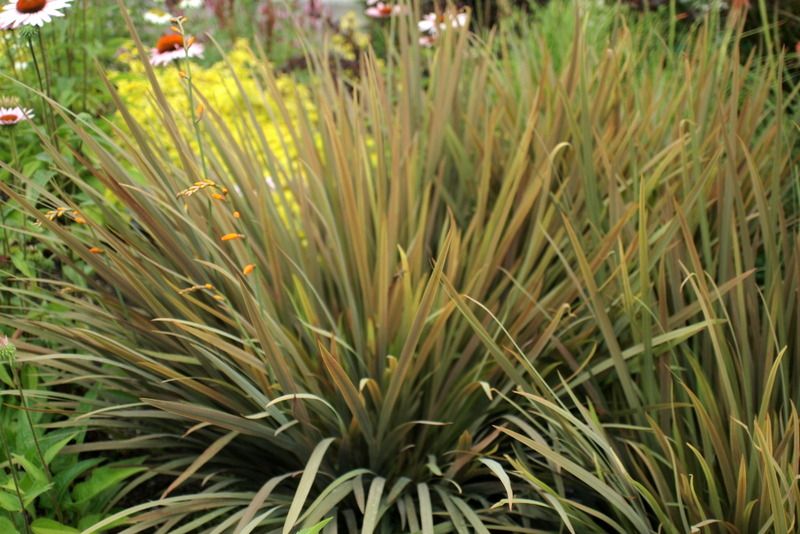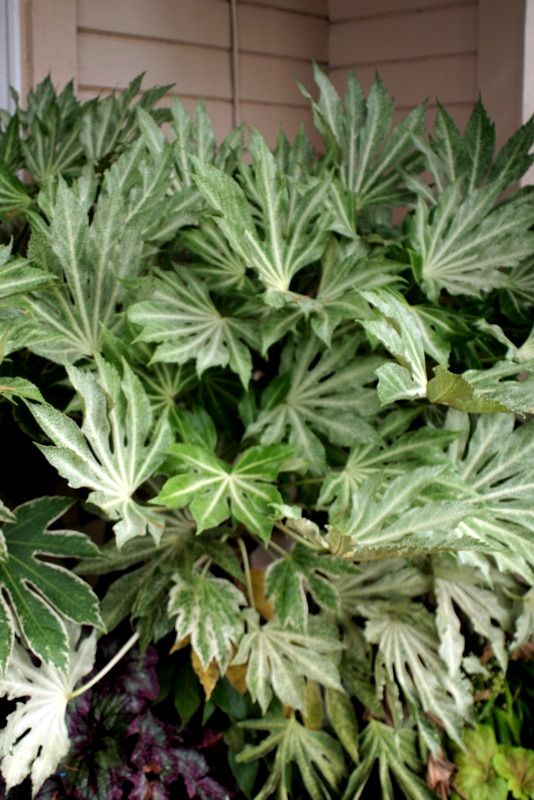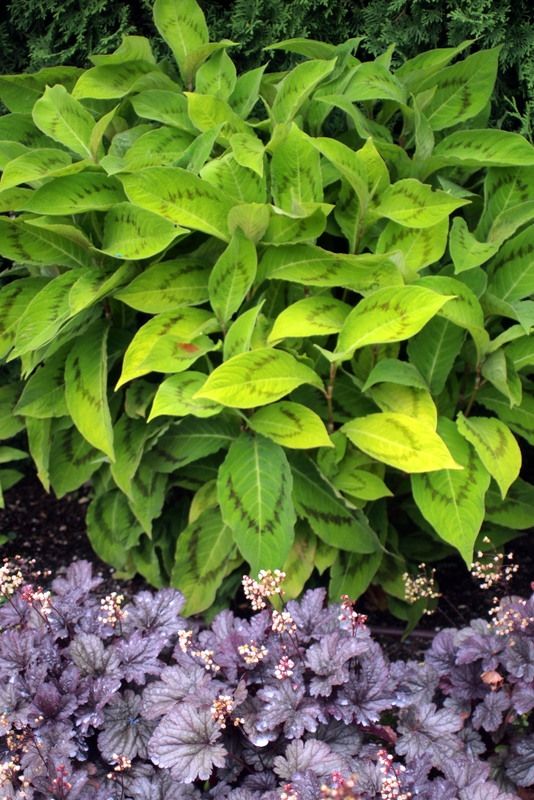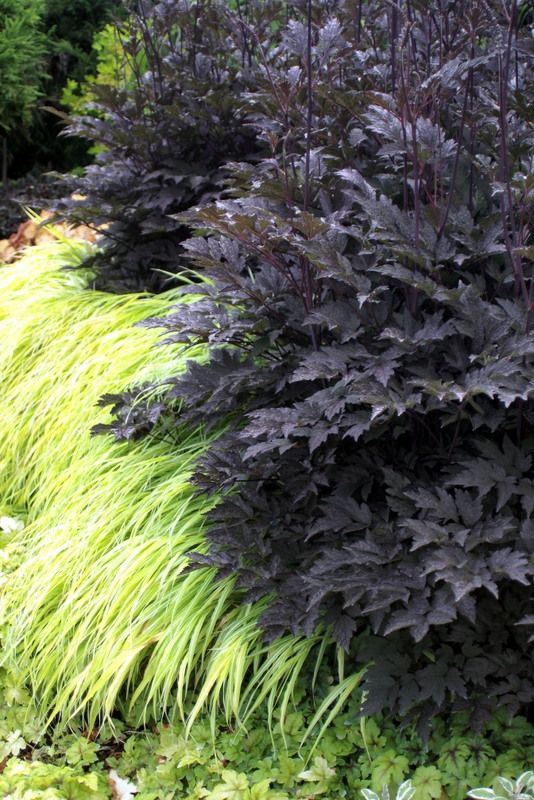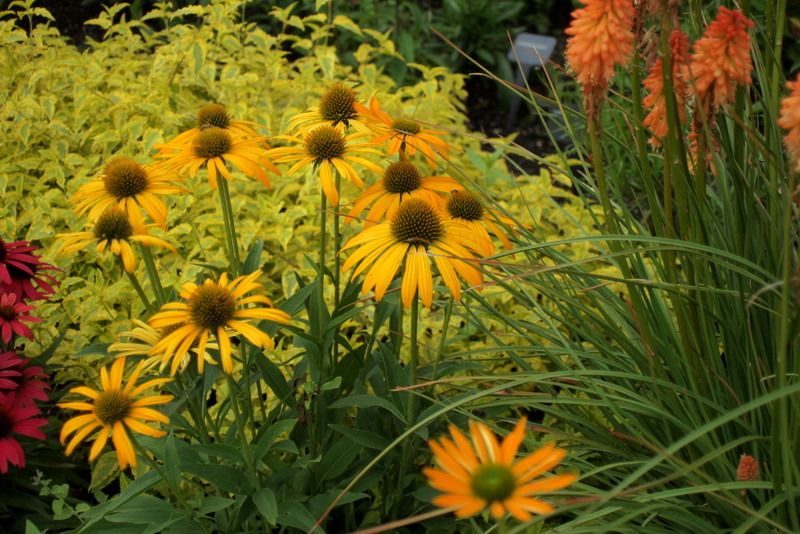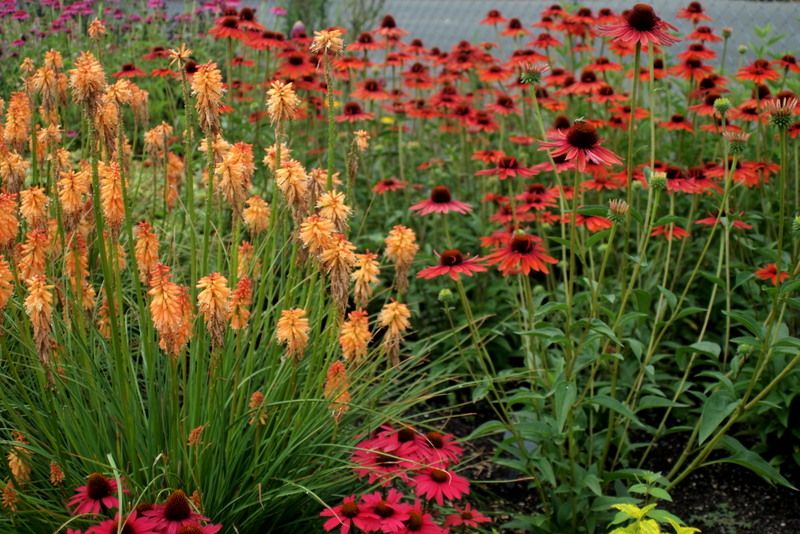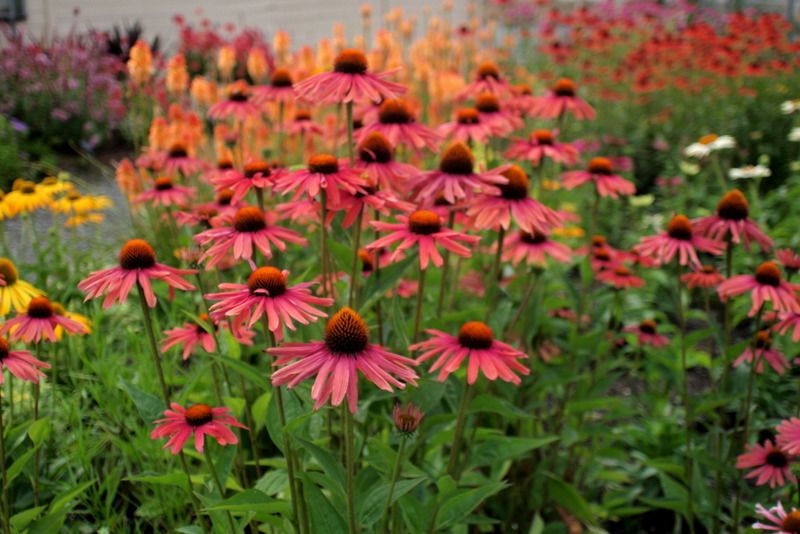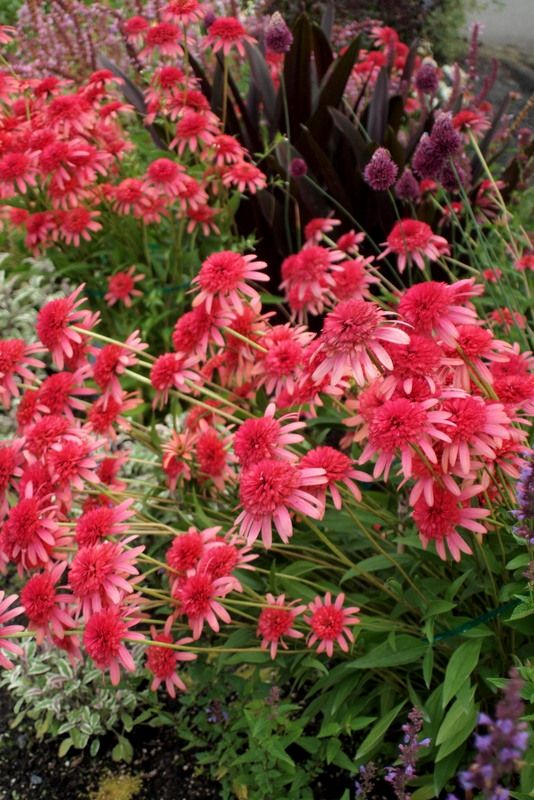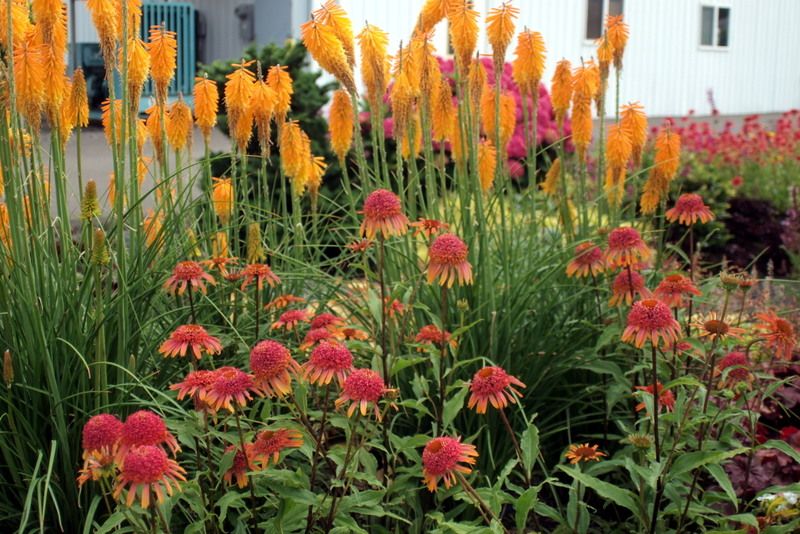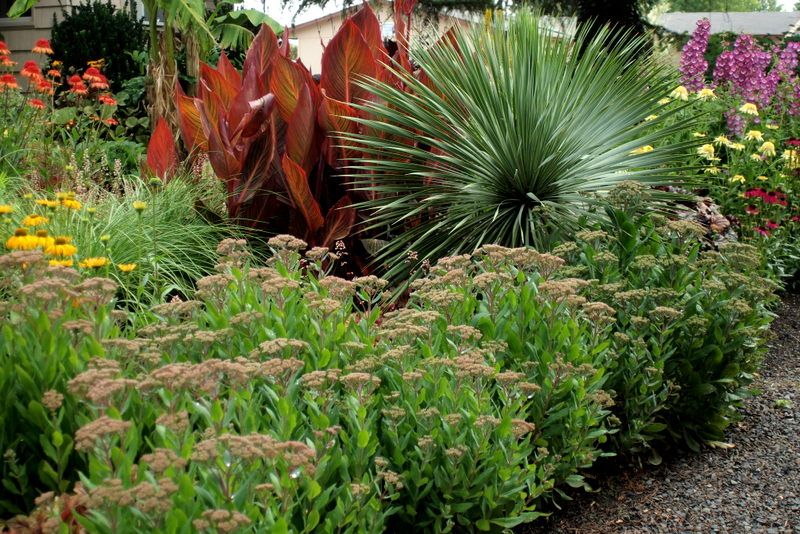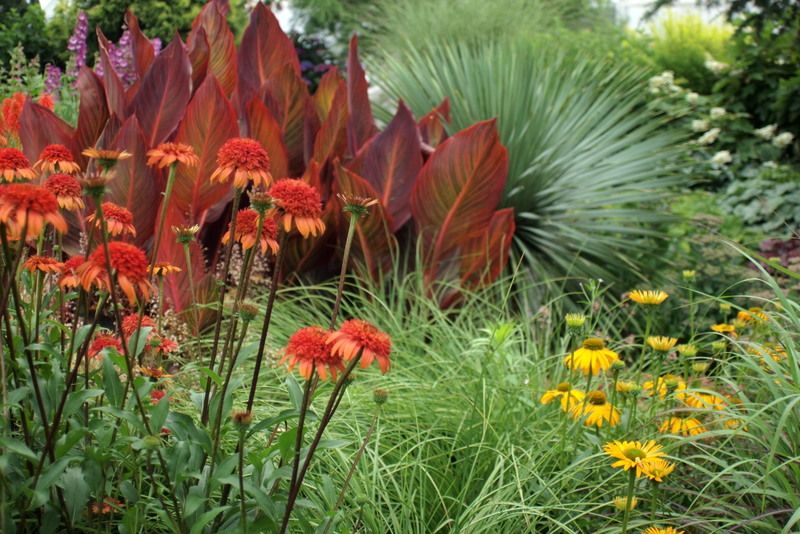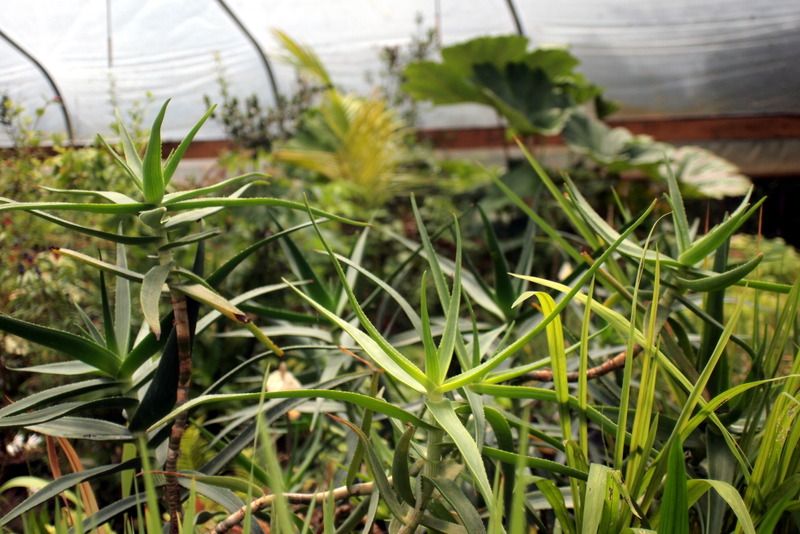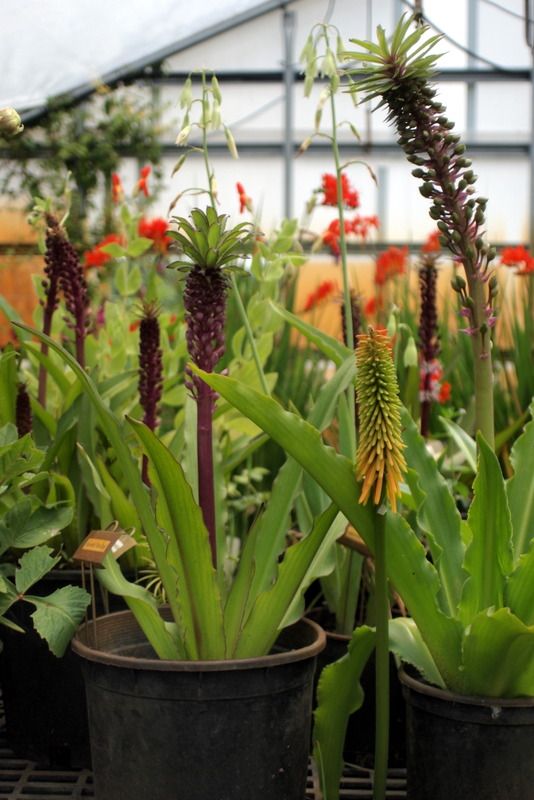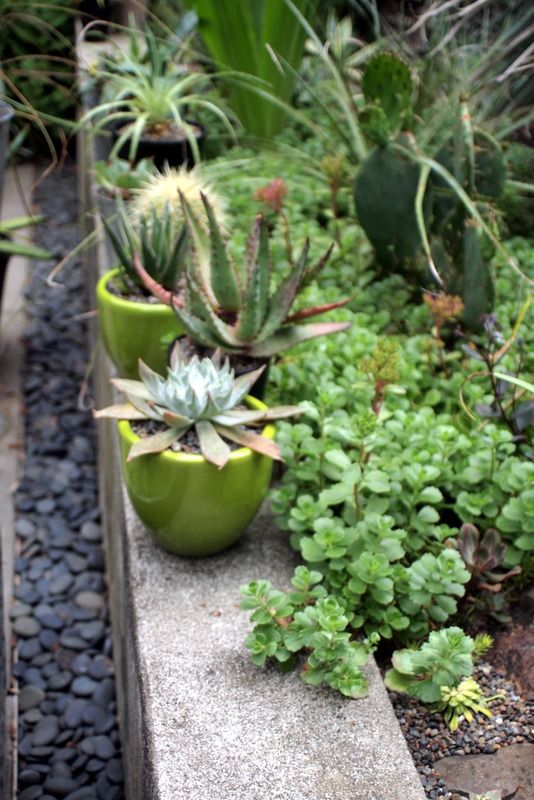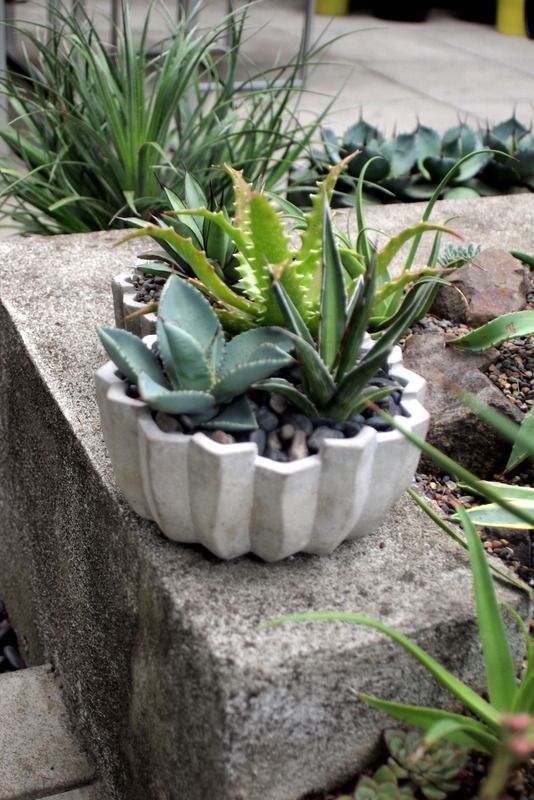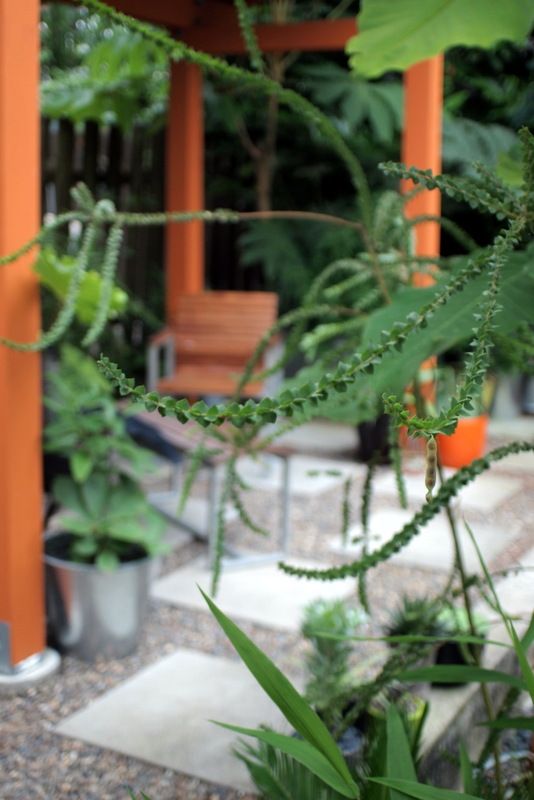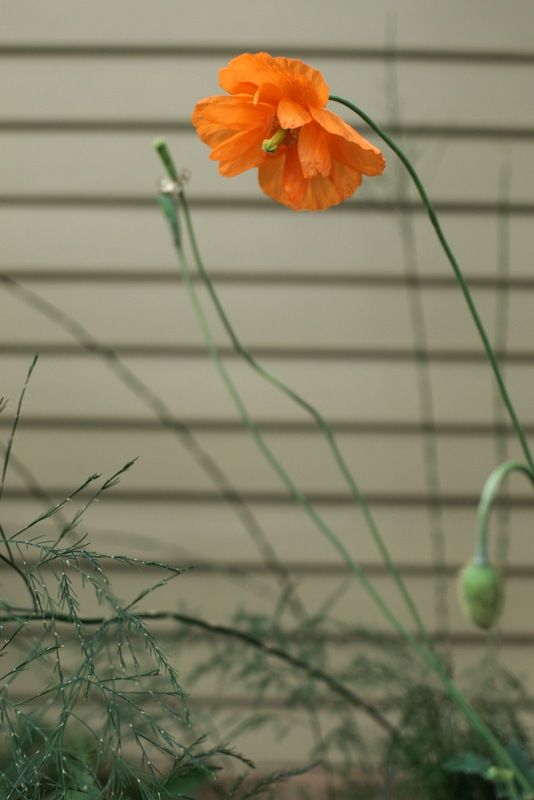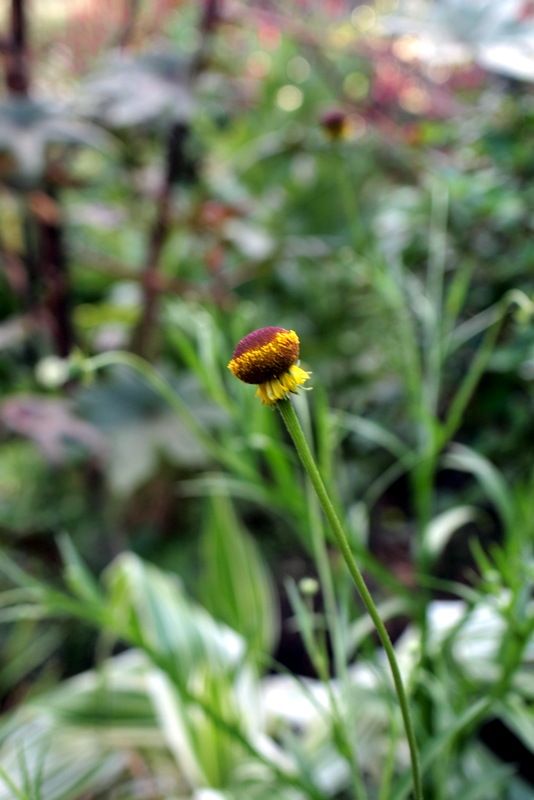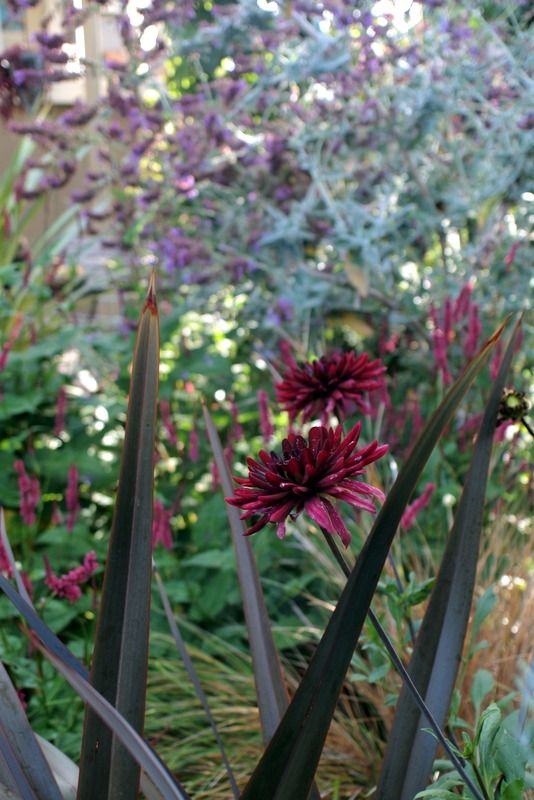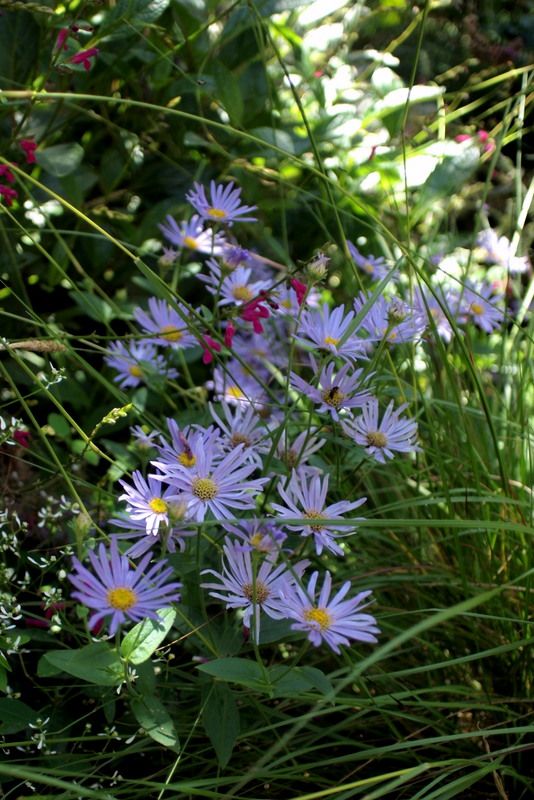August is always a truth-telling time in the life of a garden and a good month to take a snapshot of it. The hoses have been deployed this week to deep water the trees and soak the now bone-dry soil. Most irrigating up to this point has focused on containers and new plantings, but the mature plants can’t be ignored any longer. As far as the actual layout, it can be tricky to get lay-of-the-land photos in such close quarters, which is why I rarely perform this photo exercise. But some minor changes are planned for fall, so now’s the only time to make a journal of the garden as it exists this summer.
Agaves and succulents at the back porch are easy on supplemental irrigation.
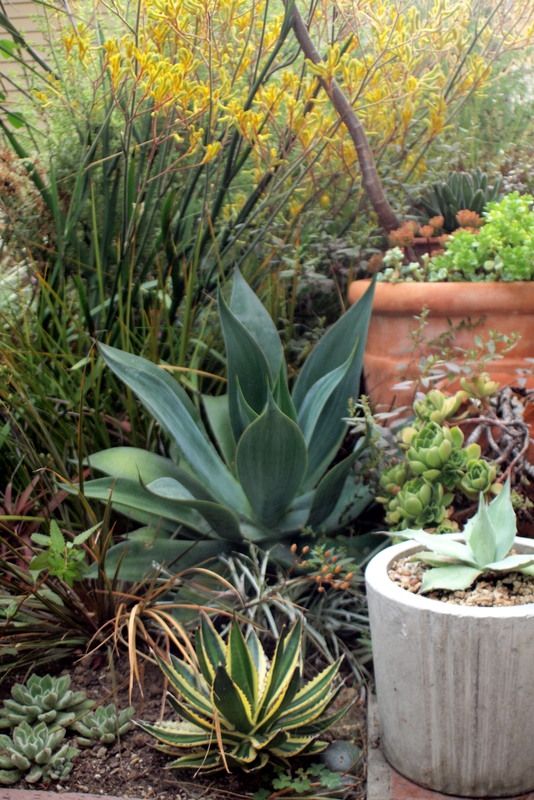
But I’m getting ahead of myself, as usual. First some context and lay-of-the-land descriptions and photos to get oriented for the August snapshot, hopefully not repeating too much from previous posts. There is no lawn or foundation plantings, in the back garden or the front. Though the garden is close to the house because the lot is small, we don’t grow plants up against this wooden bungalow. There’s trouble enough with termites and wood rot as it is. The plantings are mainly on the north and south sides of the house, and to a lesser extent the east side, which is currently getting the gate and hardscape cleaned up and is mainly dominated by a Chinese fringe tree. On the west beyond the garden gate is the business end, the driveway mess of cars, trash cans, tool sheds. The lot size is 5,750 square feet.
These photos are all of the back garden. I always describe photos at the top of the photo, which can get confusing, or so I’ve been told. From the garage and looking east at the back porch and pergola. The pergola attaches to the back of the house and also supports a roof over the back porch. A small “lookout” deck is atop the shed which houses the washer and dryer. Cushions on the lookout are just visible. We do favor a bit of multi-use, Swiss Family Robinson spirit in our projects. Amicia zygomeris in the foreground with Pennisetum ‘Princess Caroline,’ a dominant presence in the garden this summer.
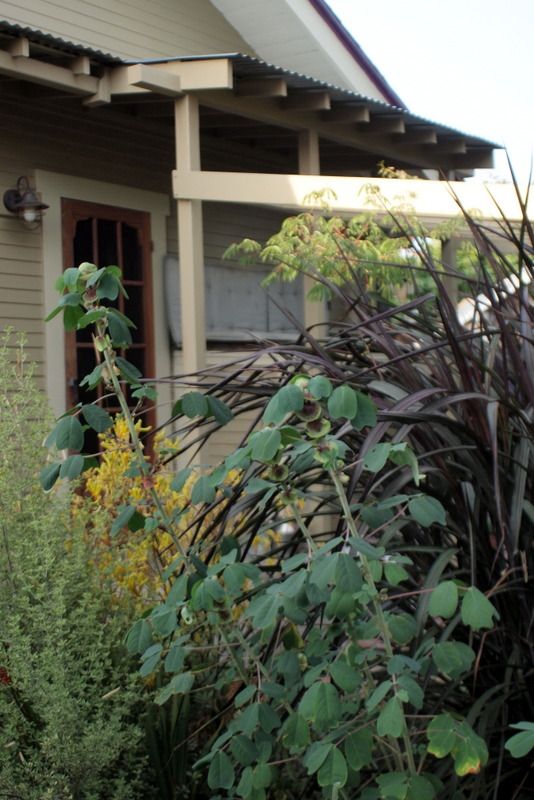
From the opposite side, looking roughly southwest. Ladder leads to the lookout. Canopies of smoke tree ‘Grace’ and Caribbean Copper Plant, Euphorbia cotinifolia, nearly touch by August.
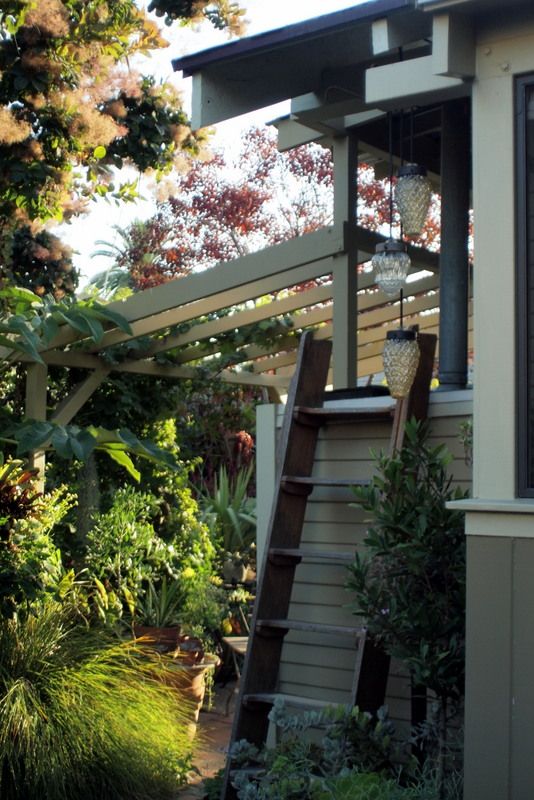
Crithmum maritimum and aeoniums with a potted bay.
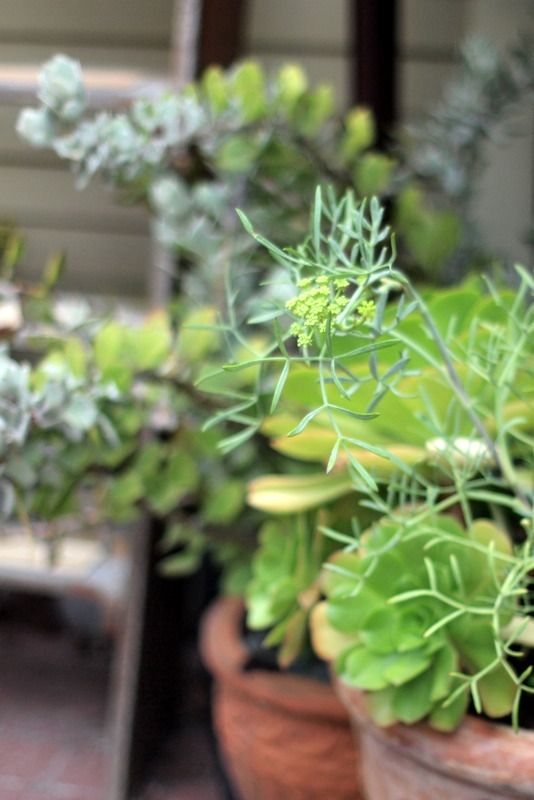
The little bath house on the east side of the house, which now doubles as an aviary, potted bay in front. A parakeet showed up exhausted and hungry in July. More Pennisetum ‘Princess Caroline’ at this end too.
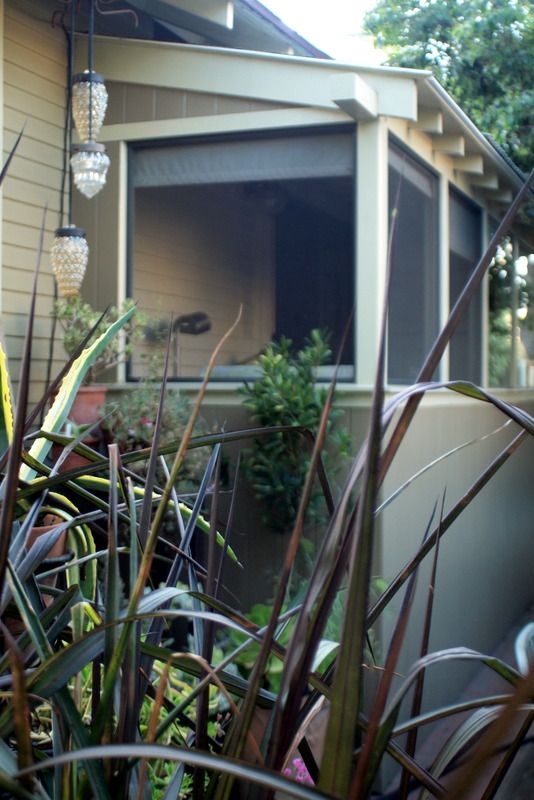
The wayward parakeet has been tentatively named “Wingnut. So far, no reports of a missing parakeet in the neighborhood. Wingnut does have a cage, but the wide-spaced bars give him free range of the bath house. The fringe tree, Chionanthus retusus, can be seen just under the shade.
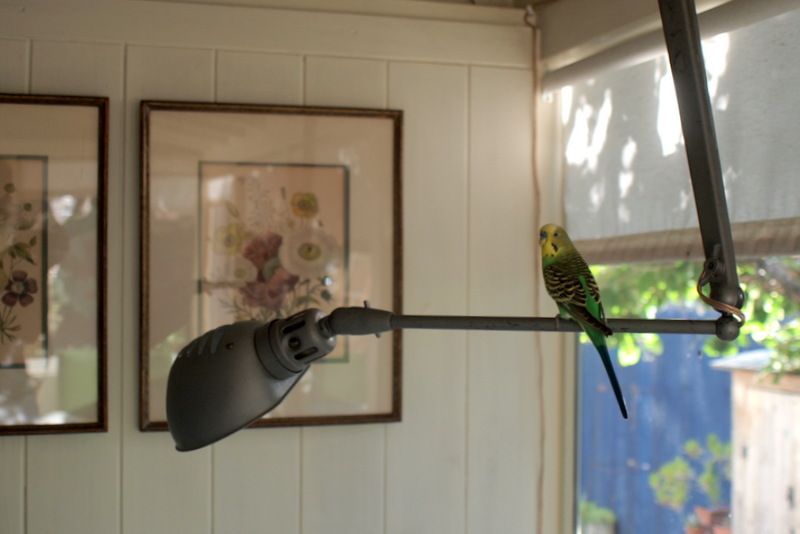
The narrow east side is mainly for tables and chairs. And pots too, natch.

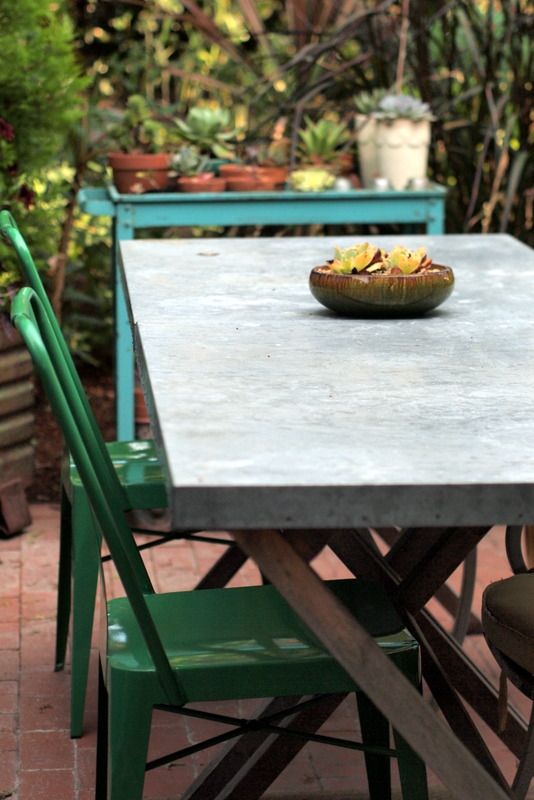
Hello, kitty

The iron trough at the east boundary, which is the blue-stained fence. The Verberna bonariensis was neglected and died while I was away and has been replaced with some variegated pampas grass, red-leaved Hibiscus acetosella, and a chocolate salpiglossis from Annie’s Annuals, never an easy annual to grow, for me at least.
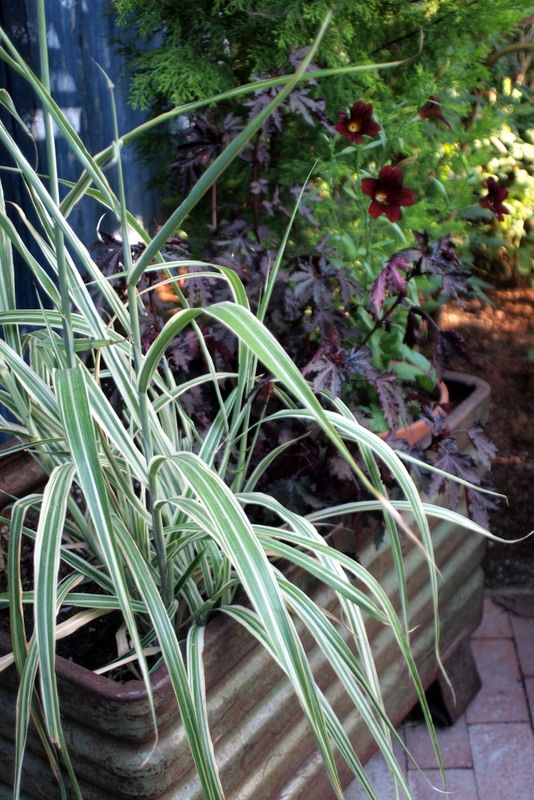
Salpiglossis likes rich soil but seems really sensitive to overwatering (and high temps — collapsed 8/13/12) When I’m feeling brave I grow them, but just a few and only in pots. Annie’s Annuals carries this dark selection ‘Chocolate Royal.’ Chartreuse background is from one of the three Monterey cypresses planted at the eastern boundary.
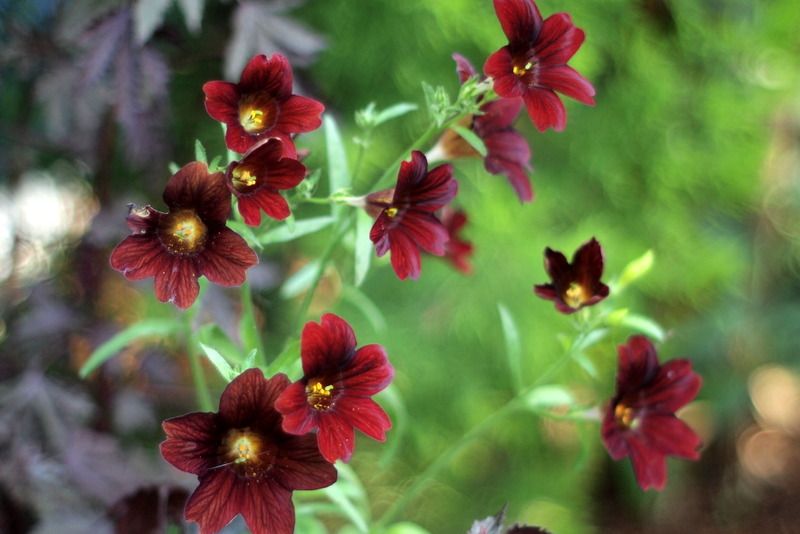
Looking to the west under the pergola, with the office door and garage wall visible. The huge burgundy grass blocking a view of the office doorway is again the Pennisetum ‘Princess Caroline,’ which just had a much-needed thinning. It badly needs splitting later this fall, at which point a blog give-away may be in order. (Hoov, Dustin, any interest?) Stipa arundinacea in the foreground with a glimpse of tetrapanax. The pot-bellied pig corgi Ein seems to have found an errant morsel of kitty kibble, an important part of his daily to-do list.
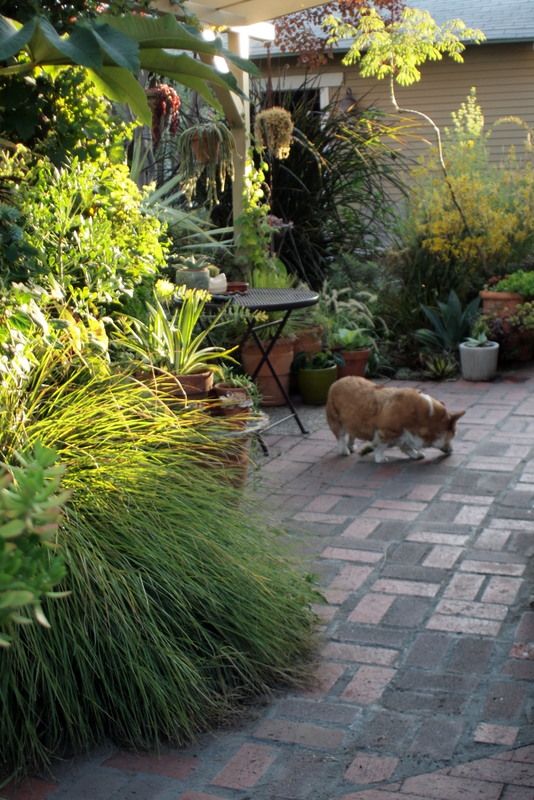
More of the tetrapanax. Just visible is the creeping fig-covered southern boundary wall and glimpse of neighbor’s roof beyond.
The burgundy bromeliad nestled under a tetrapanax leaf seems airborne because it’s part of a mossed basket on a tripod whose legs are buried in that Stipa arundinacea. A grapevine threads through the top of the pergola.
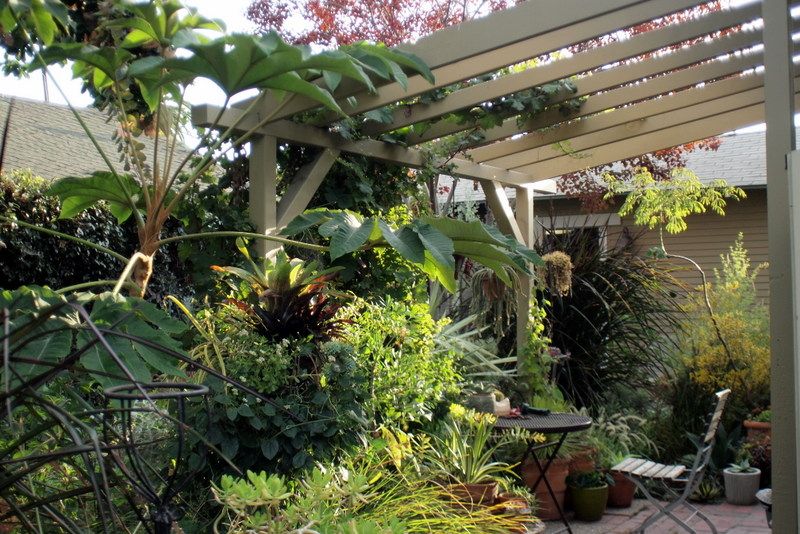
Again looking west. The agave sits in a tall wrought iron plant stand that was probably made in Tijuana.
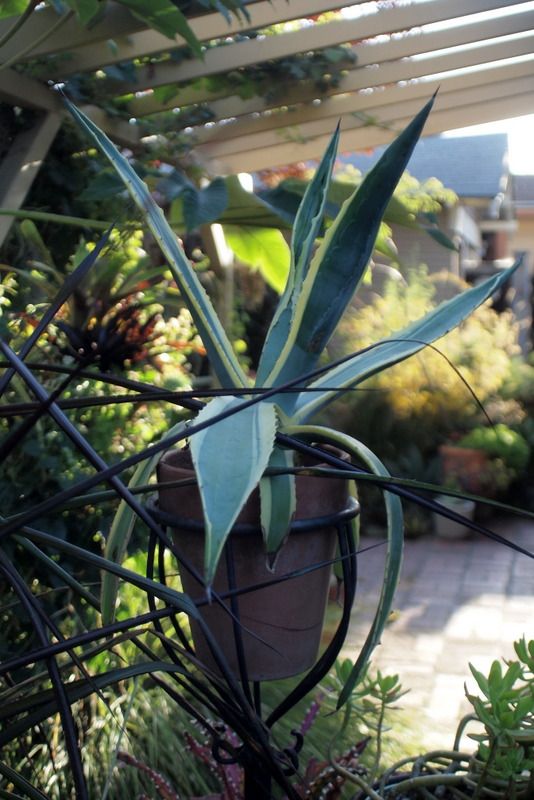
Lepismium cruciforme coloring up nicely in the sun.
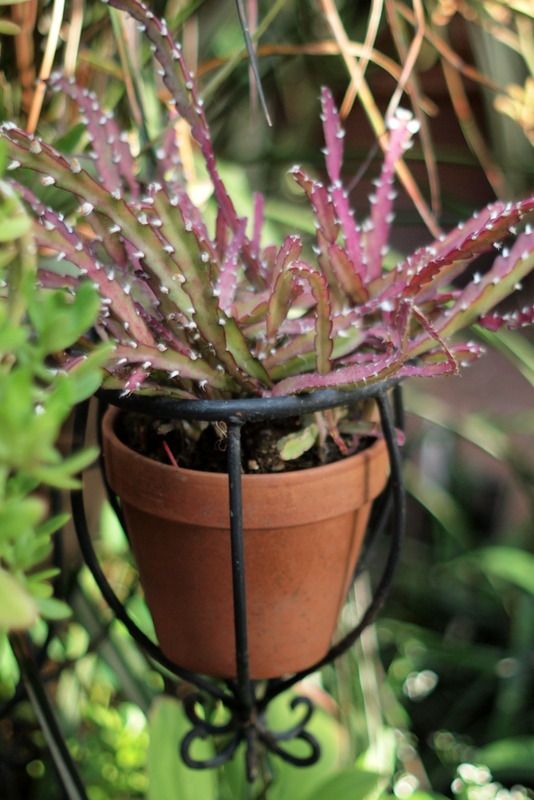
Looking east under the pergola from a photo taken in June, but it still looks pretty much the same, if a bit fuller. The kangaroo paws, fresh in the June photo, have been thinned out as they age and topple over. Plantings in the foreground are just in front of the back porch and along the walkway.
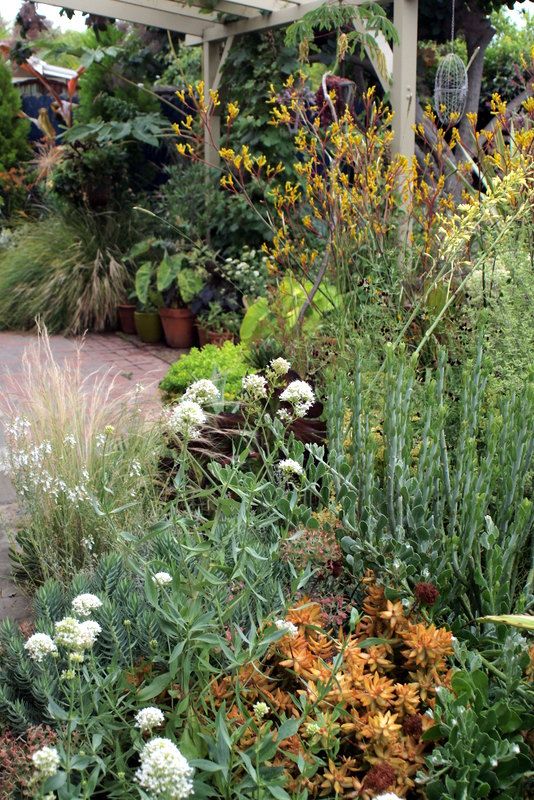
In front of the porch looking west to the garage. Agave ‘Blue Flame.’ Flowers of the kangaroo paws have lost their clean June outline by August.
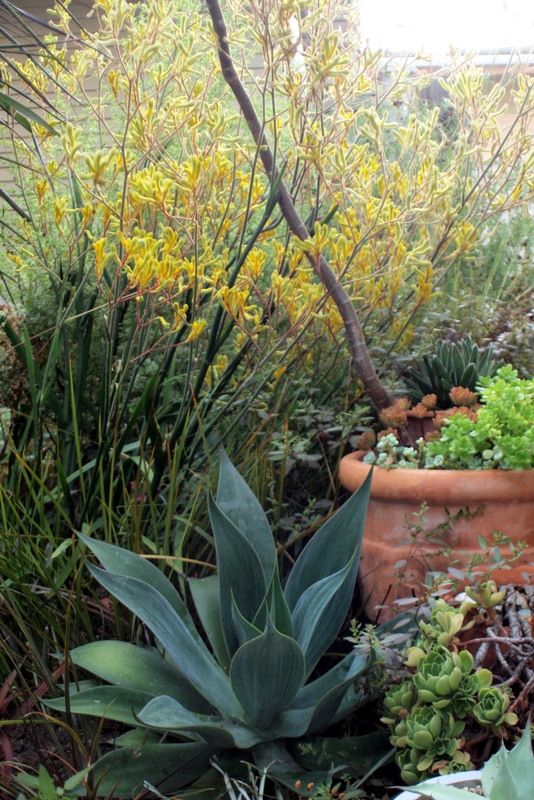
Behind the anigozanthos can be seen the Australian mintbush, Prostanthera ovalifolia ‘Variegata’
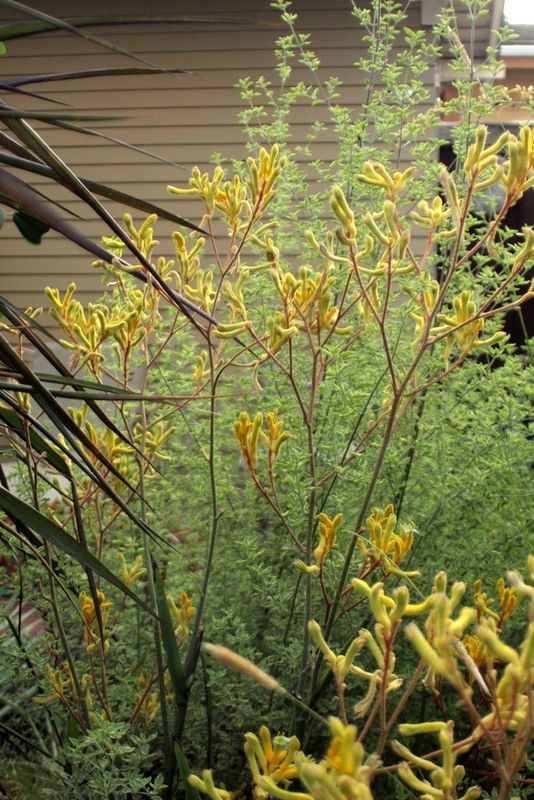
Slim, leaning trunk belongs to the tapioca, Manihot grahamii, in a large pot with Sedum confusum. The intervals of yearly growth can be seen at the bends and angles to its trunk. Wonder what happens if I cut it back hard next spring.
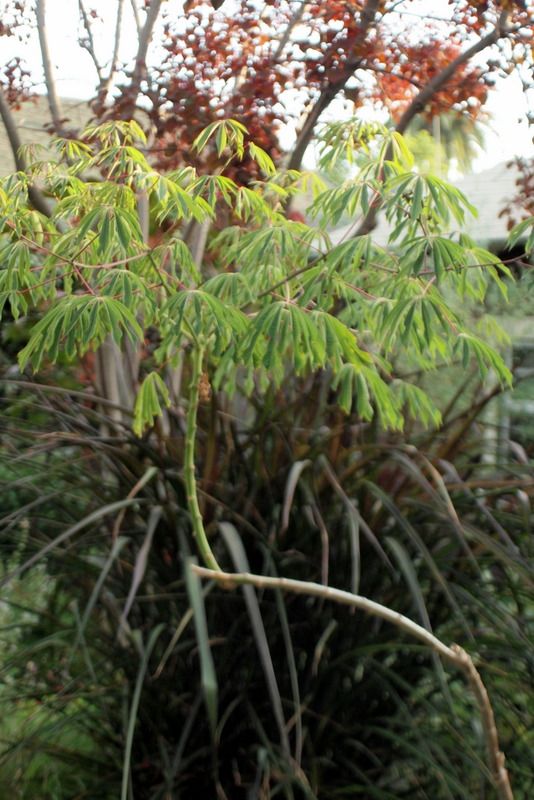
So many pots here under the pergola, a few hanging, but I never count.
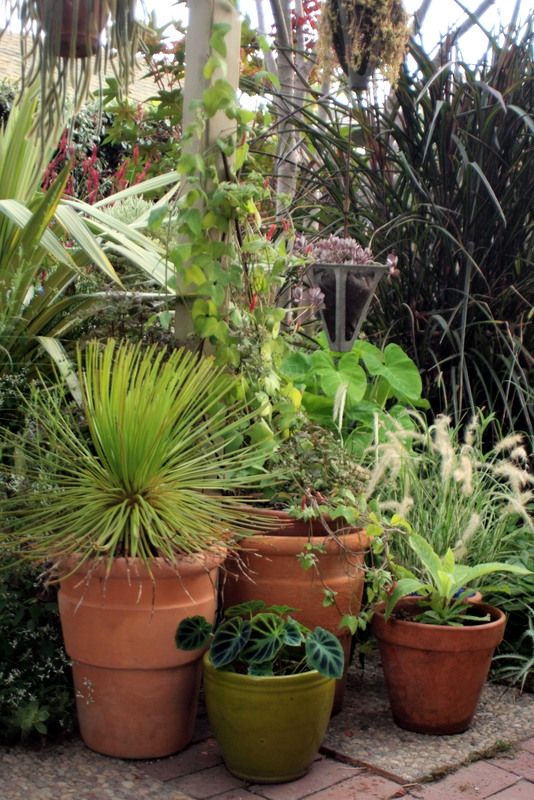
The variegated grass is new to me this year, Pennisetum ‘Skyrocket,’ shown here with Xanthosoma ‘Lime Zinger’
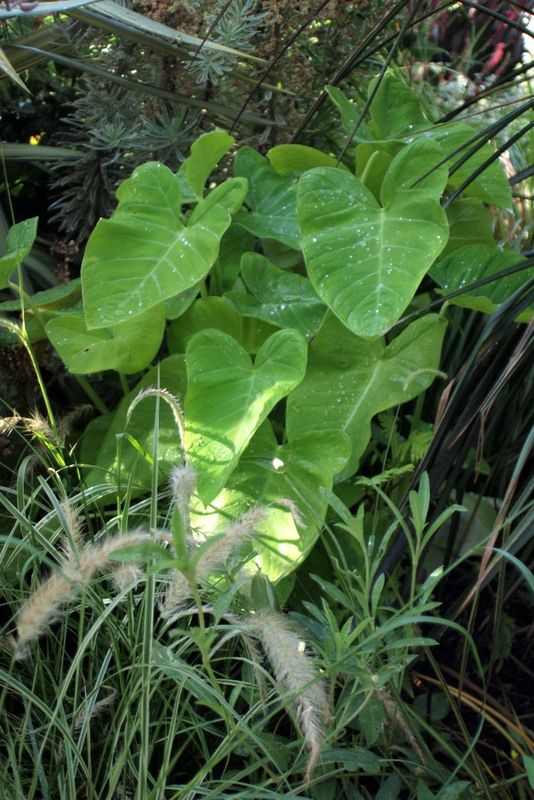
By August, plantings near the porch are starting to crowd the walkway that runs against the house.
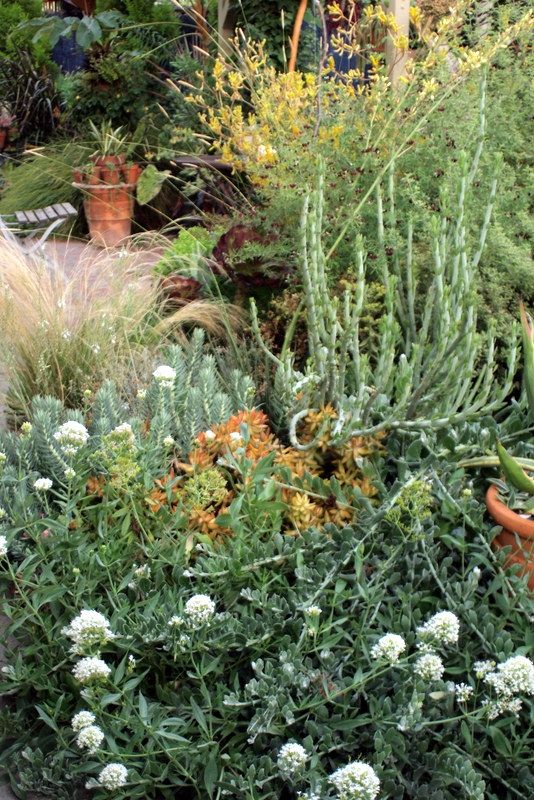
Feather grass, centranthus, Sedum nussbaumeranium, Senecio anteuphorbium.
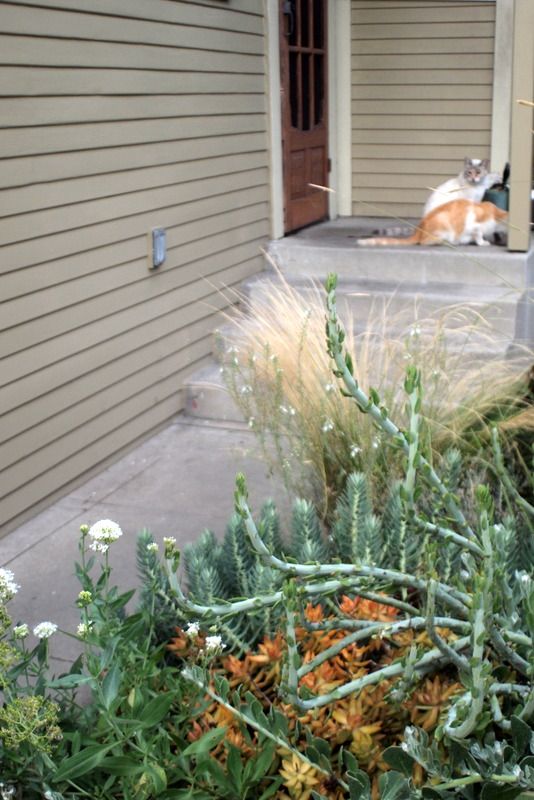
And this unnamed, Chrysanthemoides incana, a trailing, silvery succulent that spills onto the pavement in fascinating patterns. A gift from garden designer Dustin Gimbel.
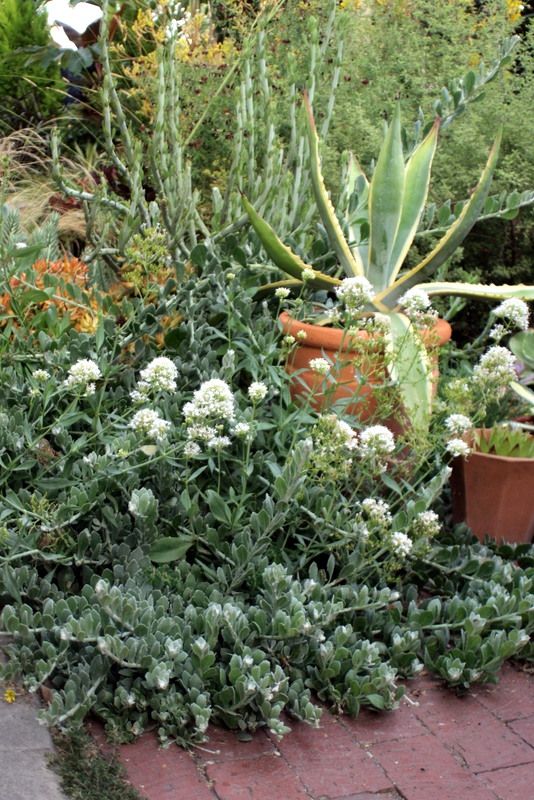
This Cotyledon orbiculata has really gained size this summer and also bulges onto the walkway. The burgundy flowers of Lotus jacobaeus are threading through the Australian mintbush. Office/garage in background.
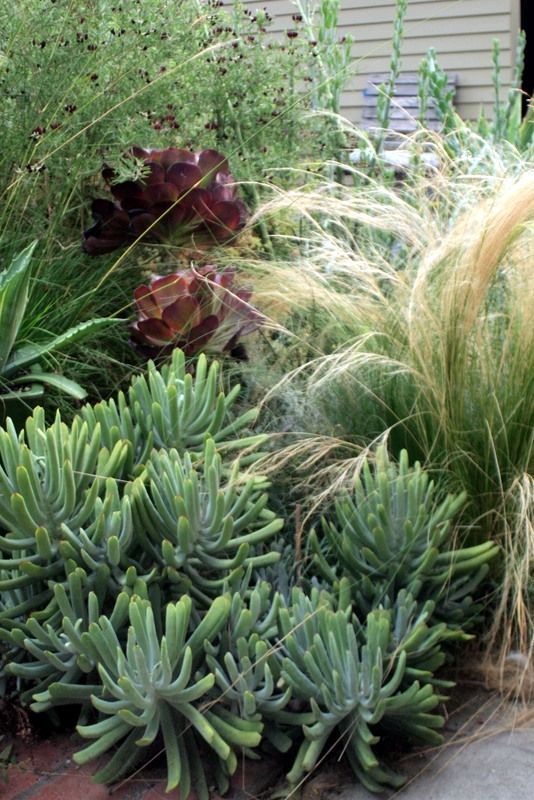
Euphorbia rigida is happy here as well.
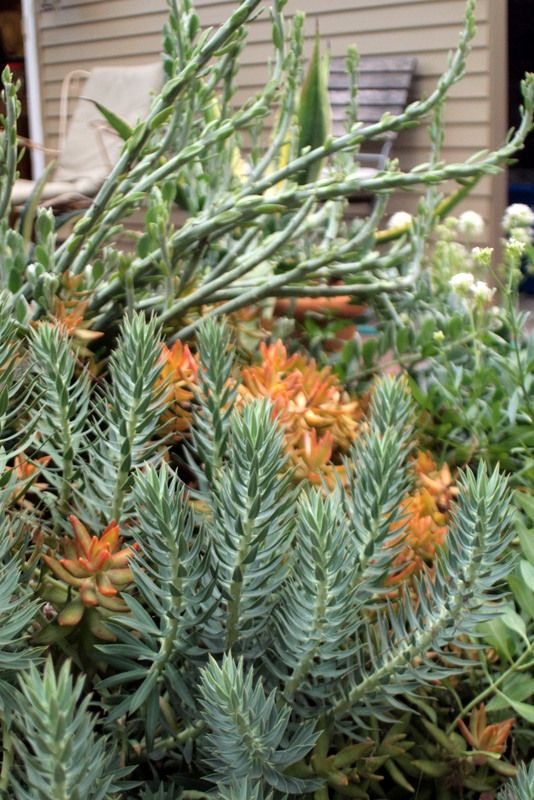
White Centranthus ruber reseeds along the walkway too. I love the surge of plants at my feet, not to everyone’s taste, I know.
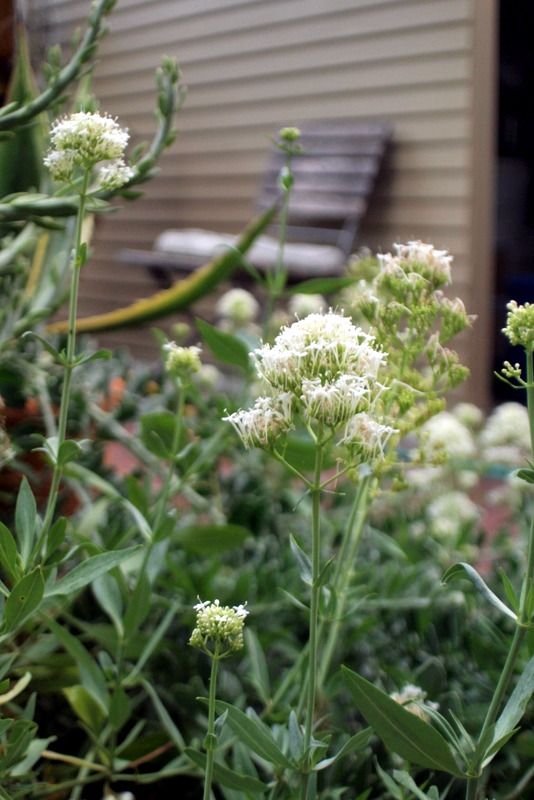
The walkway along the house heading west leads to a gate to the driveway or turns south into the patio in front of the garage/office.
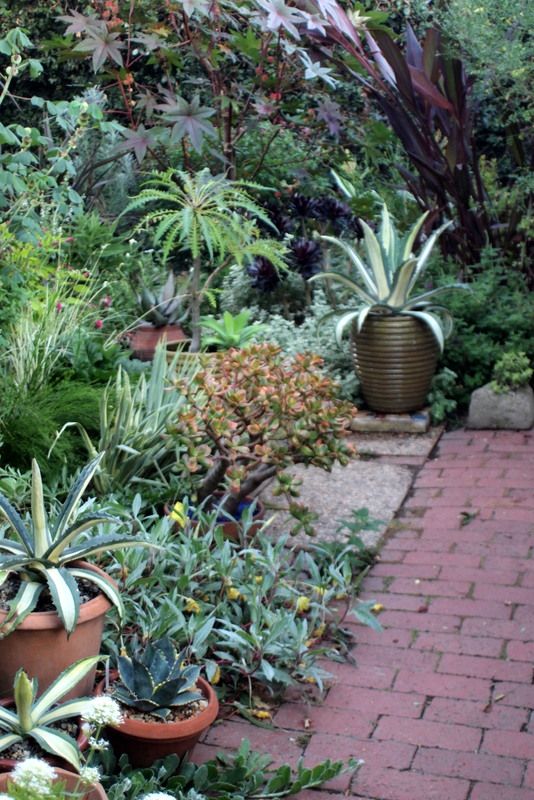
This summer, in the border behind the agave in the beehive pot, grows canna, castor bean, ornamental corn, Helenium puberulum. (Teucrium hircanicum bloomed here earlier, mostly bloomed out now. Very glad to have made this teucrium’s acquaintance this year. It’s already started to reseed into the brick patio.)
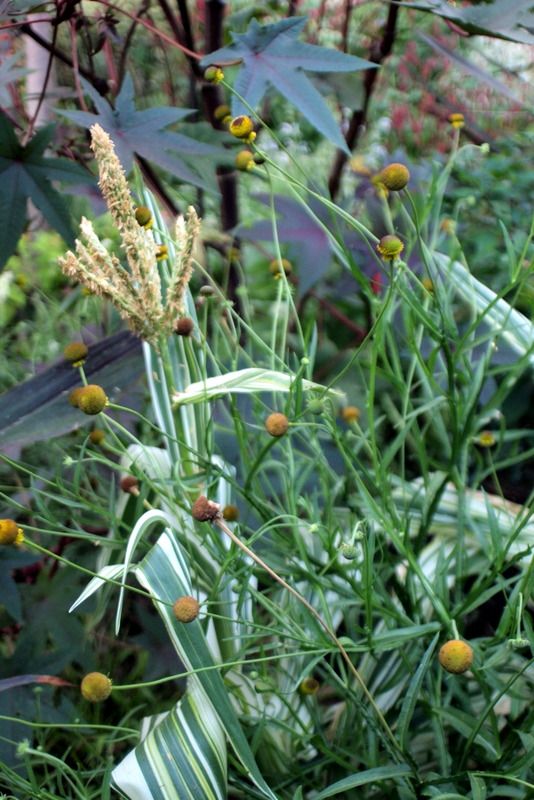
And Lysimachia ephemerum, a couple blooms its first year. Uncertain whether it will thrive here in zone 10. Scabiosa ochroleuca in the background.
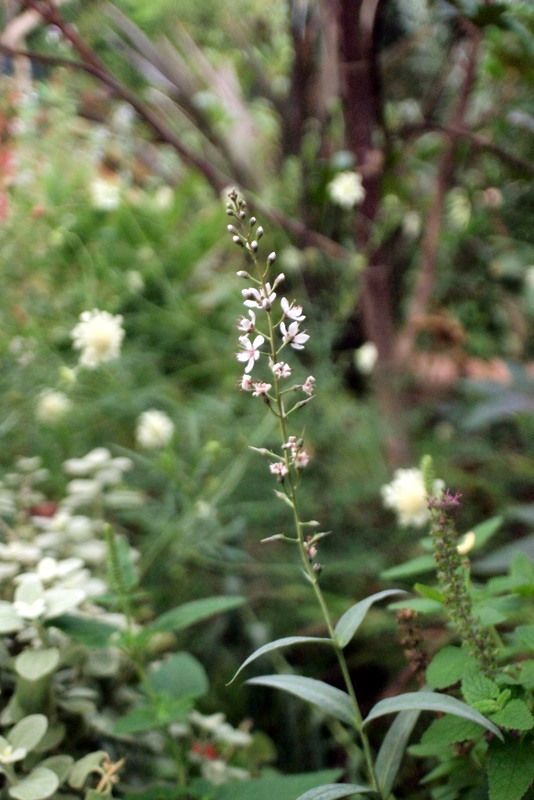
Potted agaves on the office patio, house now in the background.
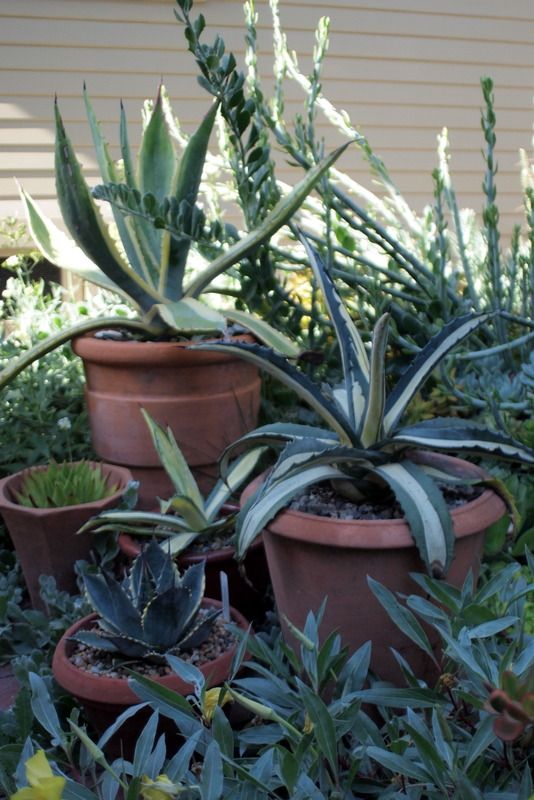
Burnished result from mistreating a potted jade plant.
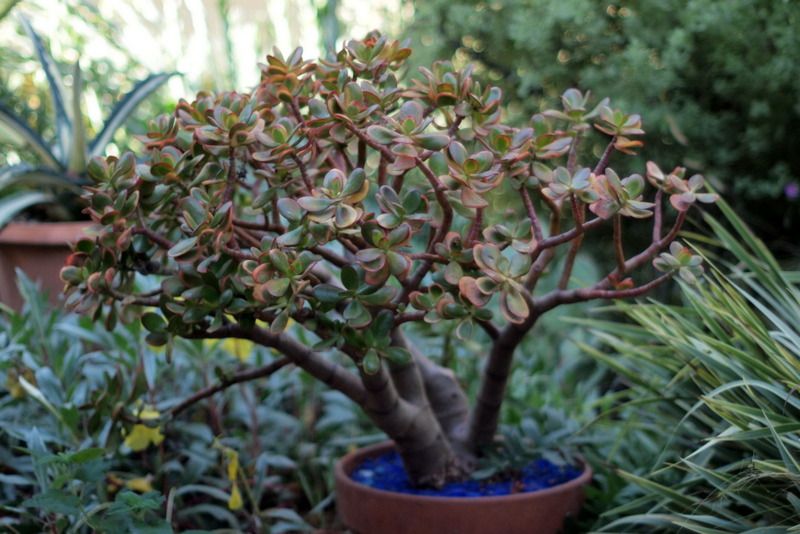
It can be difficult to distinguish what’s growing in pots and what’s in the ground here, a feature of the garden in August.
Pots are for flexibility in changing things up. There are no hardiness issues with any of these plants.
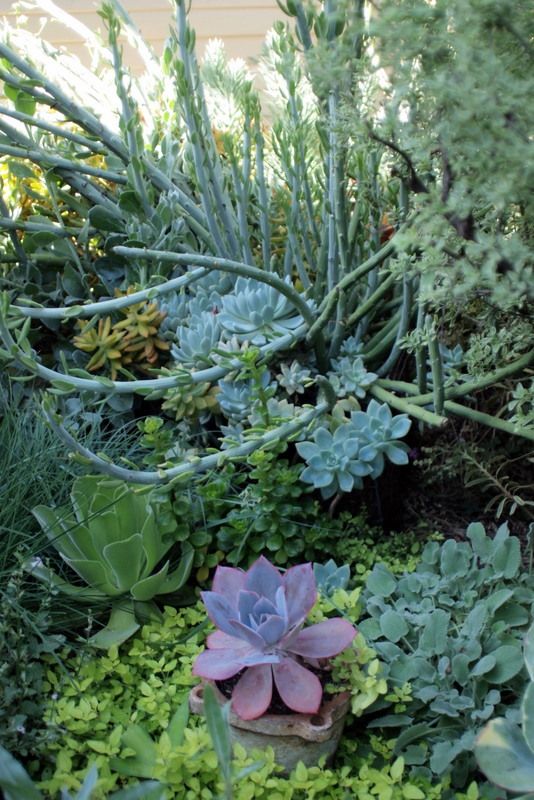
This aeonium is in the ground. Though it came unnamed, by its furry leaves I’m guessing it’s A. canariense.
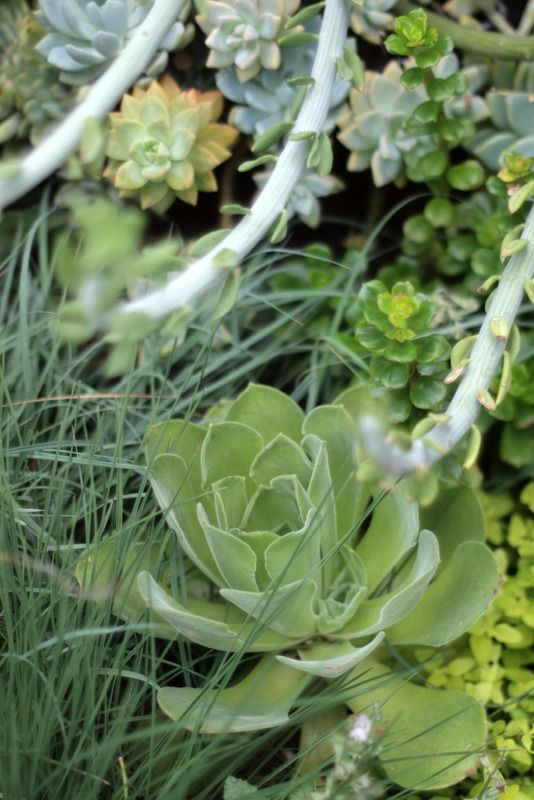
Swooping branches are Senecio anteuphorbium. Blue succulent is the Mexican Snowball, Echeveria elegans.
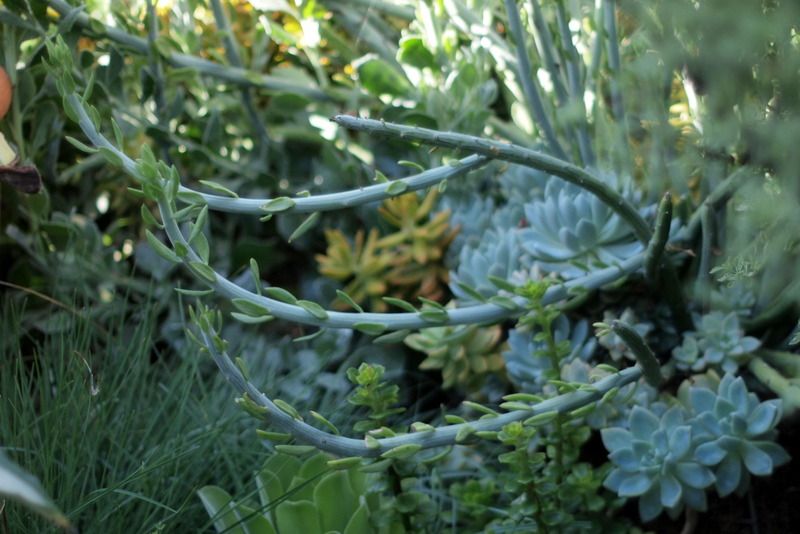
Sonchus and Agave attenuata ‘Kara’s Stripes,’ a pup from the front garden.
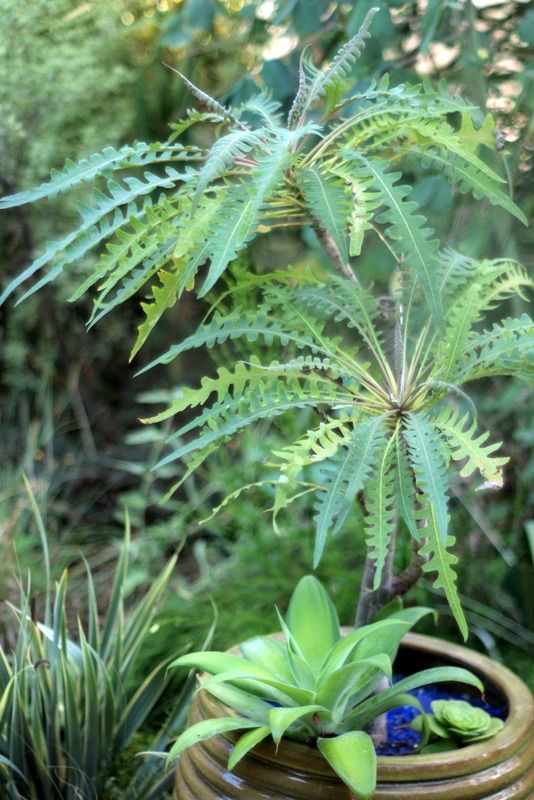
The pathway off the office patio ends abruptly now, but used to run east/west through the entire length of the border behind the pergola. I needed the space for more plants, and there’s still a bricked access path against the southern boundary wall to reach the compost bins. Who needs redundant paths, anyway?
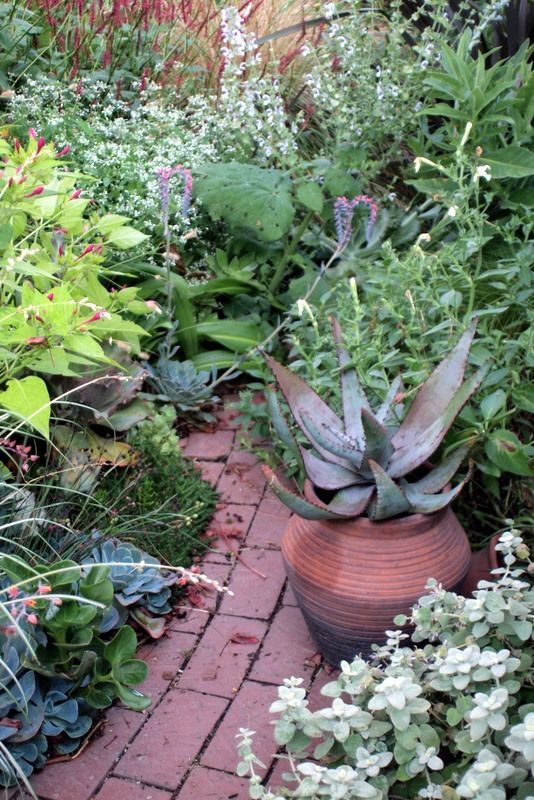
Self-sown Mirabilis jalapa ‘Limelight’ loves August.
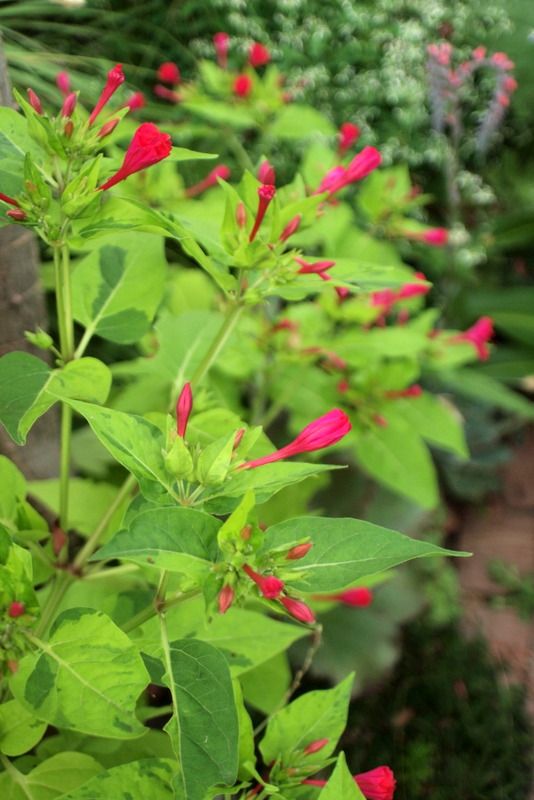
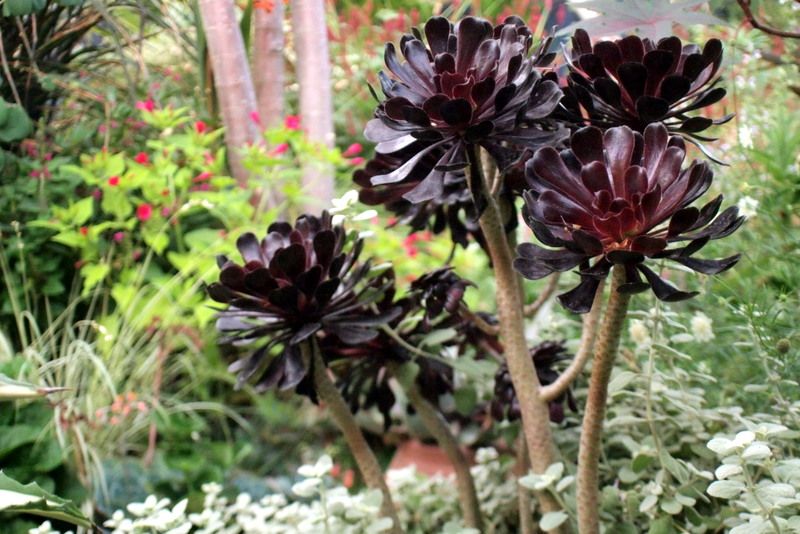
Looking west at the garage/office wall from deep in the border that curves around behind the pergola, through Persicaria amplexicaulis to the potted agaves on the small brick patio in front of the office. Slim trunk is the Caribbean Copper Plant, Euphorbia cotinifolia, a 15-foot tree here. On hot summer days, you can hear the crackle of its seeds exploding, a sound I heard quite a bit last week.
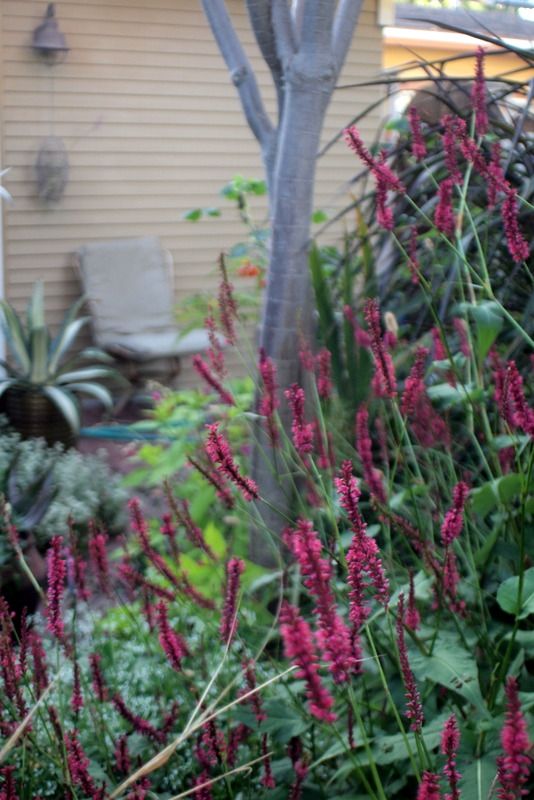
Looking east through the persicaria at the trunks of the smoke tree ‘Grace’
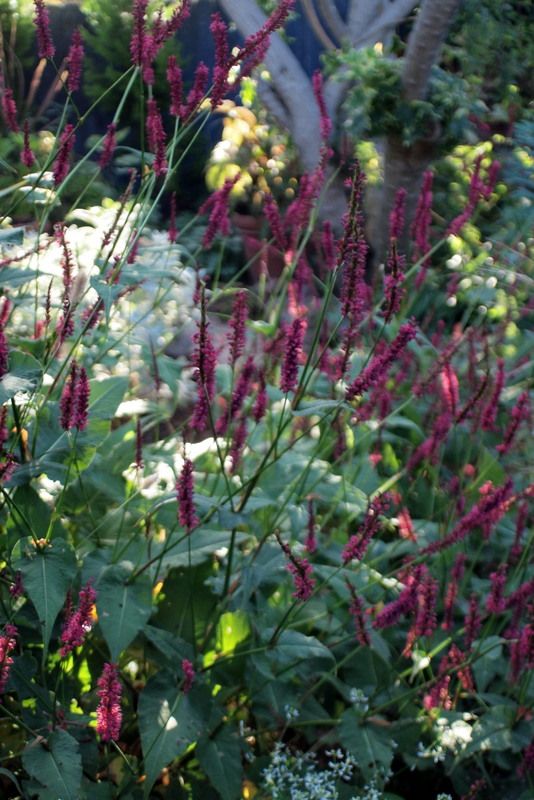
As I’ve mentioned many times, this knotweed is an amazingly good perennial for zone 10, which puts it at the top of a very short list. Never complains when the border gets too dry, as it invariably does by July. Reliably returns every spring. The bees are all over it. Doesn’t get knocked down by summer rain because we never get any, which means I’d be able to grow the new Belgium varieties whose spectacularly dark flowers are so full and brushy they are considered fit only for cut flowers — if and when they finally make it to the States.
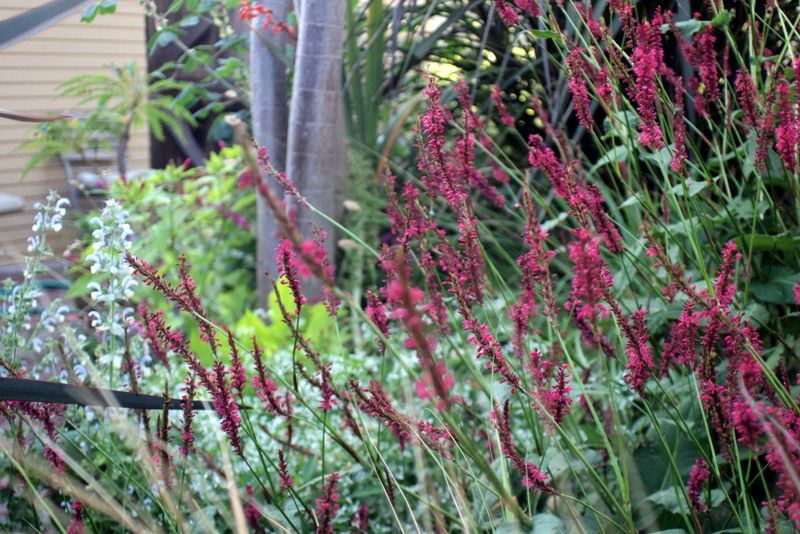
Looking east from the border behind the pergola and its grapevine.
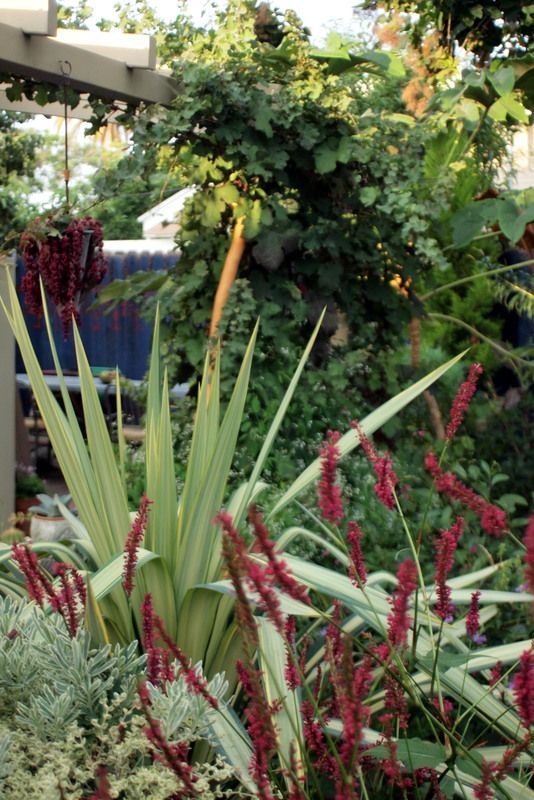
Still in the border behind the pergola, looking west, sideritis in the foreground. This one may be Sideritis oroteneriffae. I’m trying out quite a few of these Canary Island shrubs. From Annie’s Annuals & Perennials. A nearby 6-foot Salvia canariensis and some other stuff was removed late July, and a barked access path was temporarily reinstalled to assist in the removal of the smoke tree ‘Grace.’ Either removal or a severe pruning.
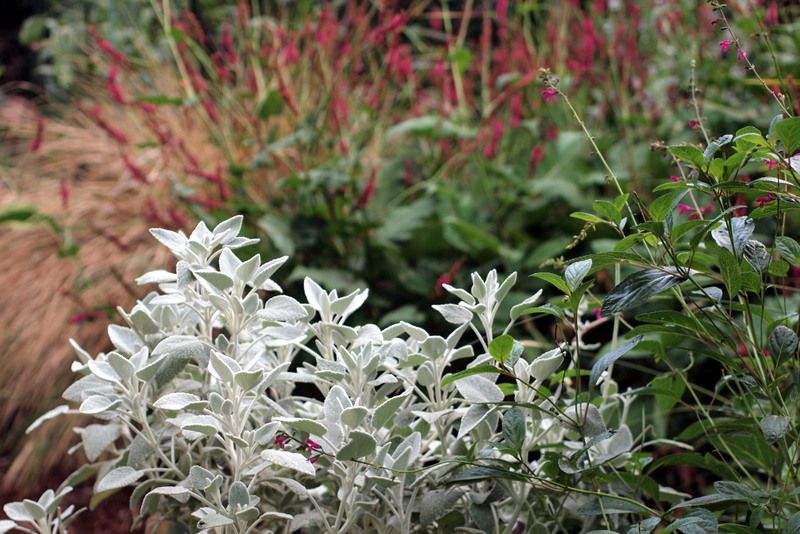
Looking west past a yucca to the enormous girth of Pennisetum ‘Princess Caroline’
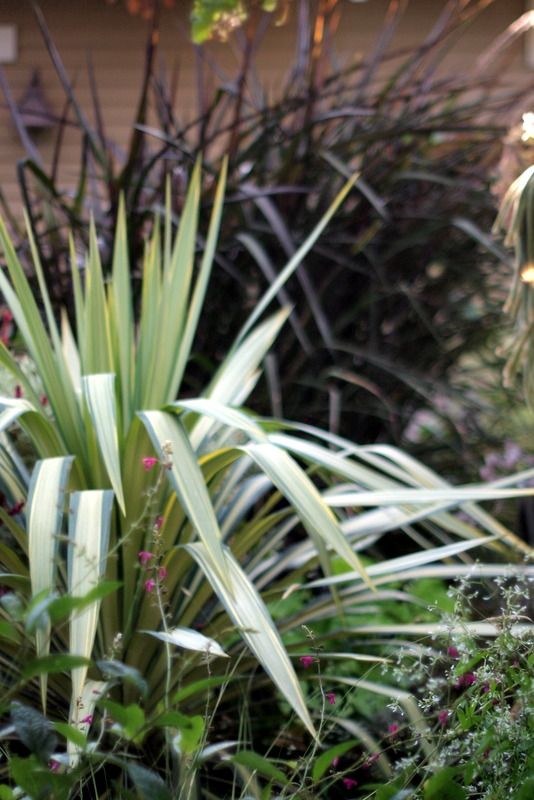
Which completes, more or less, the snapshot of the back garden in August 2012. I know I’ll be glad that I did this sometime in January 2013.
